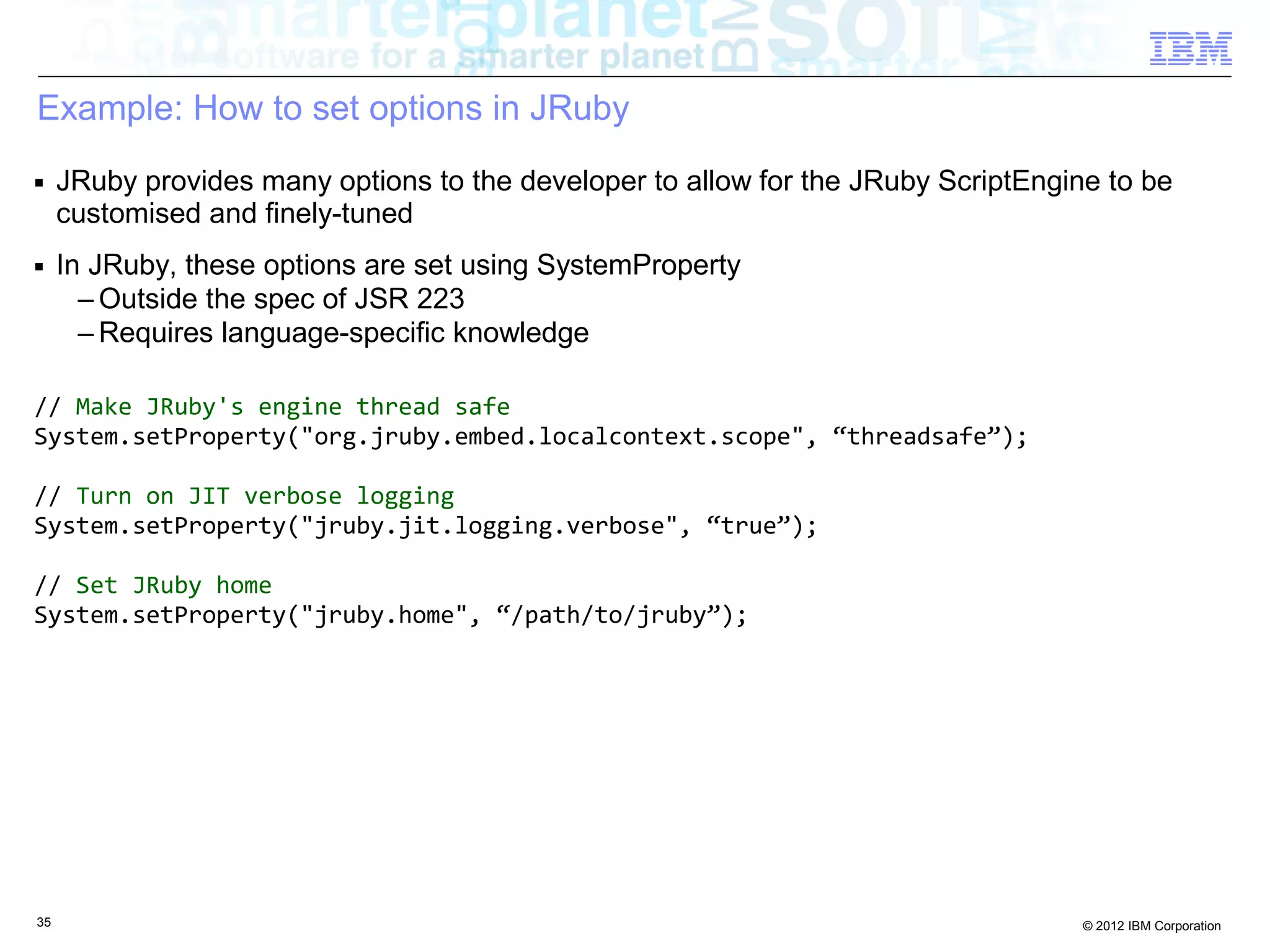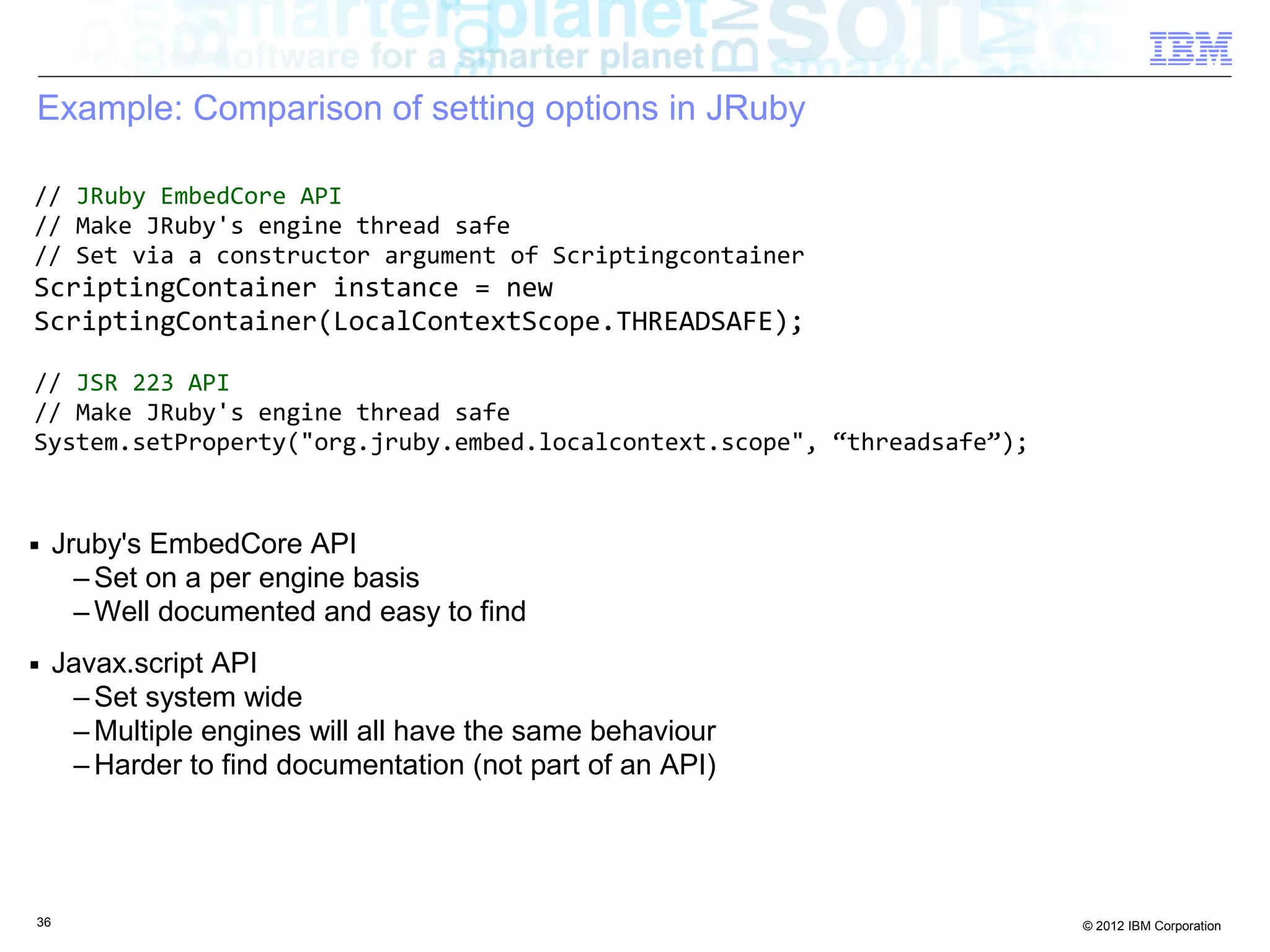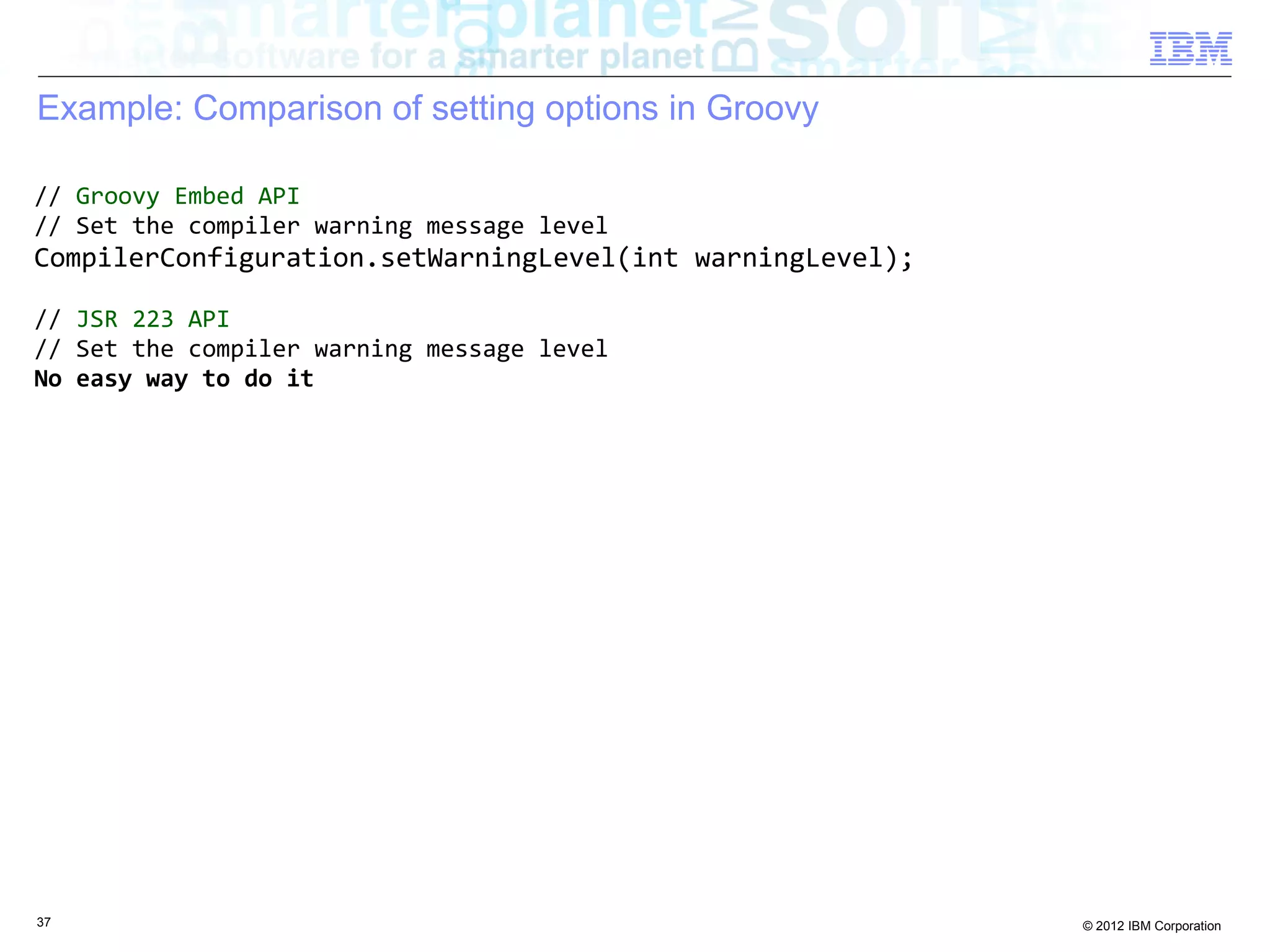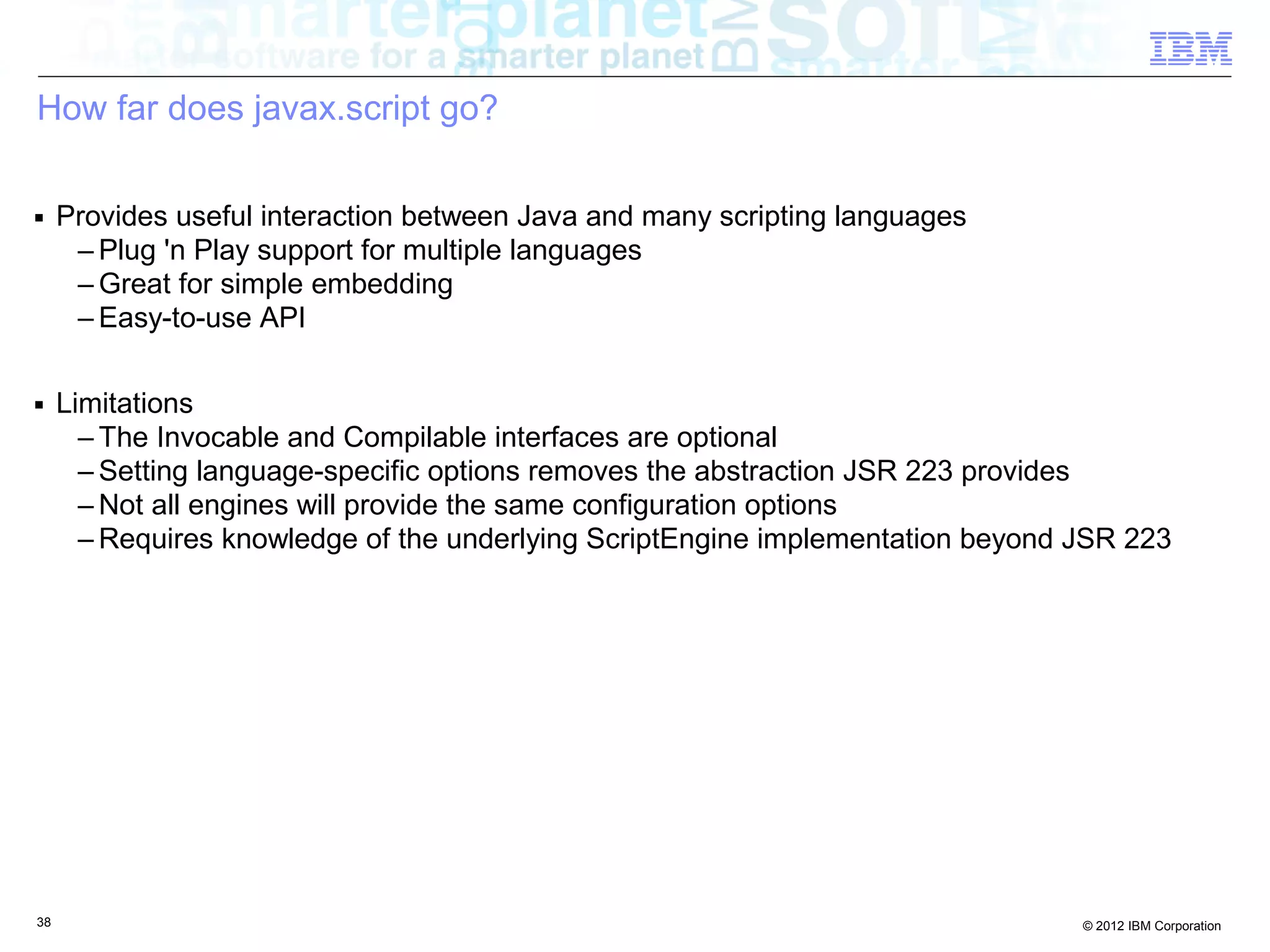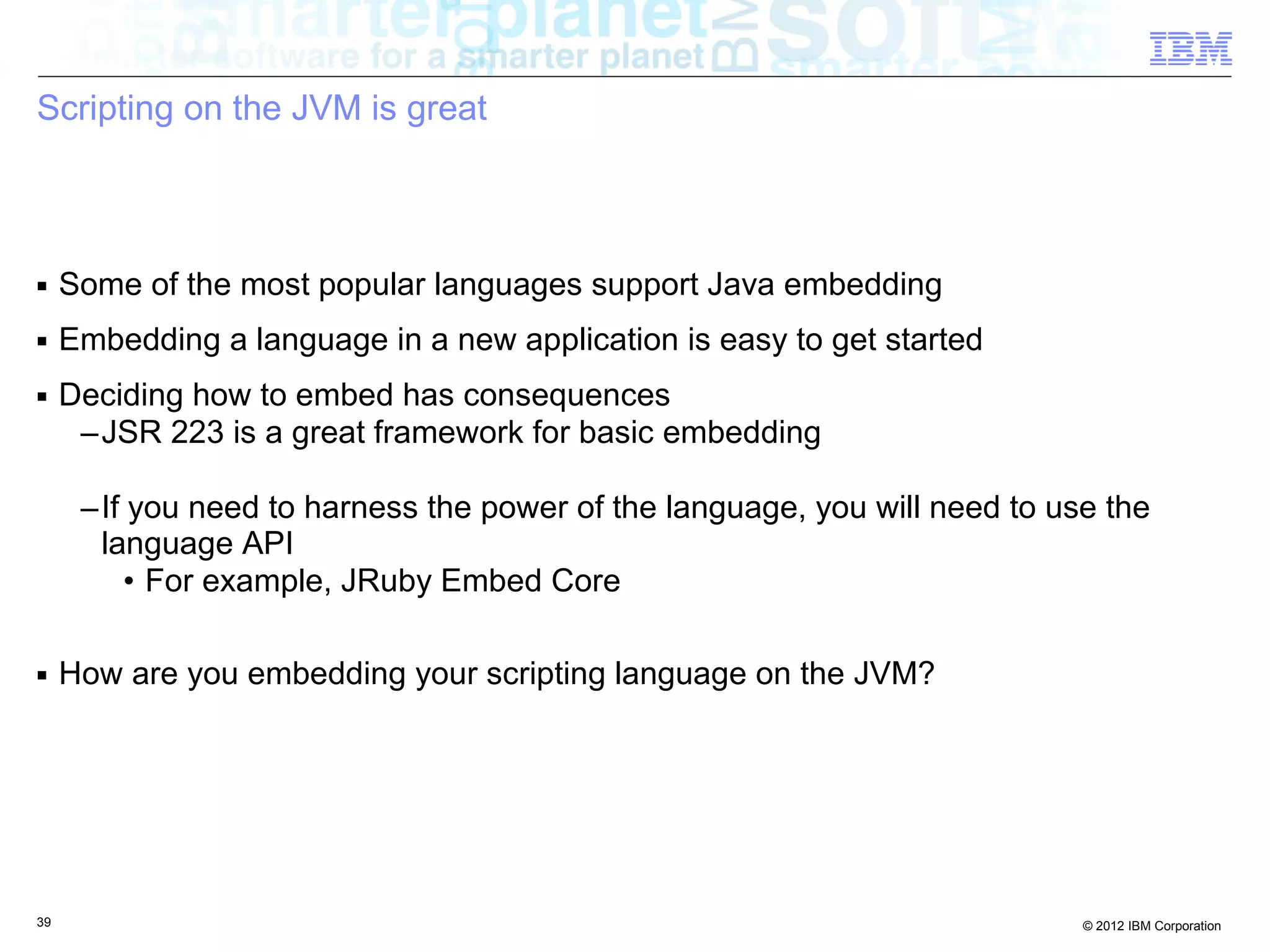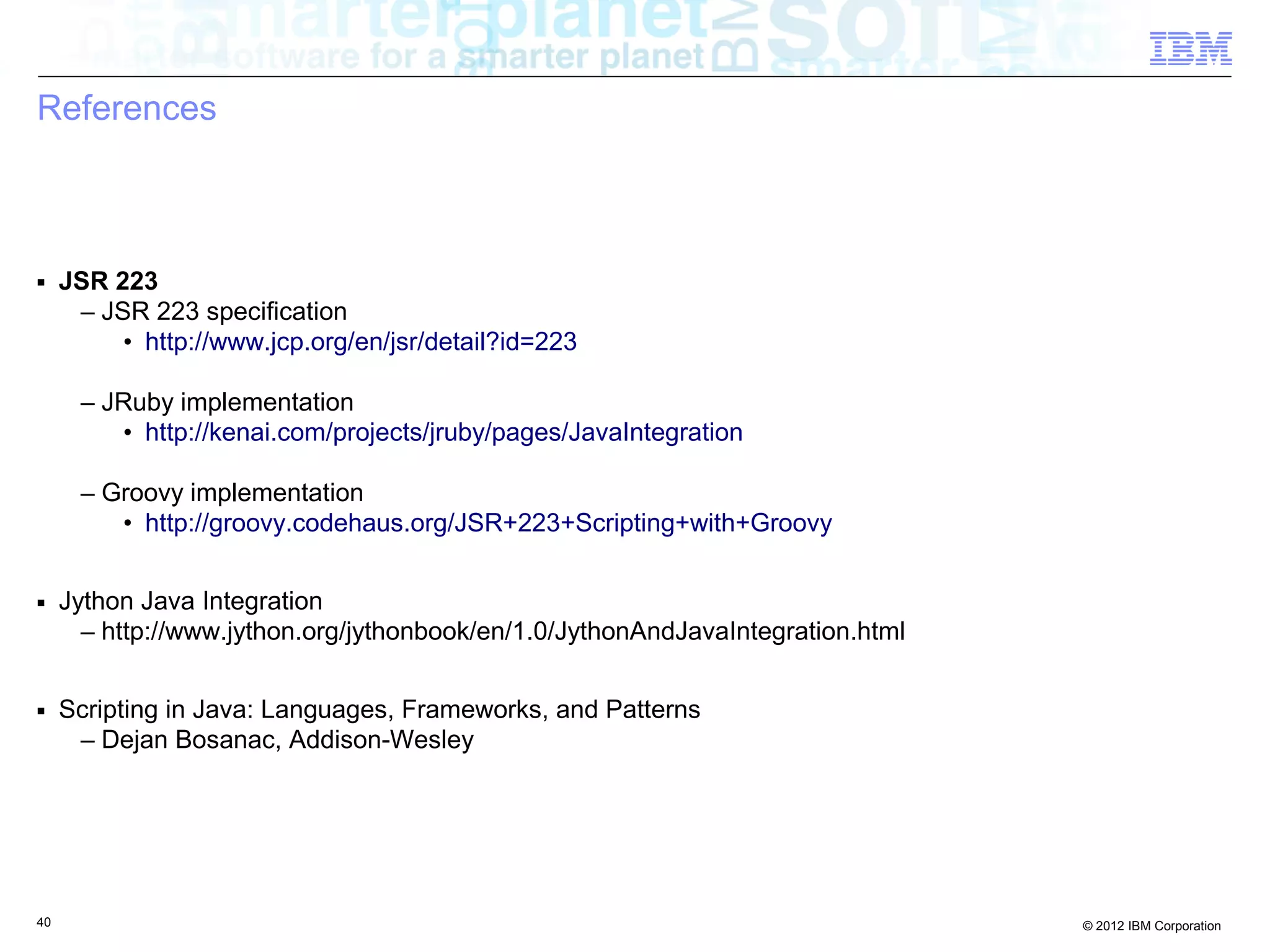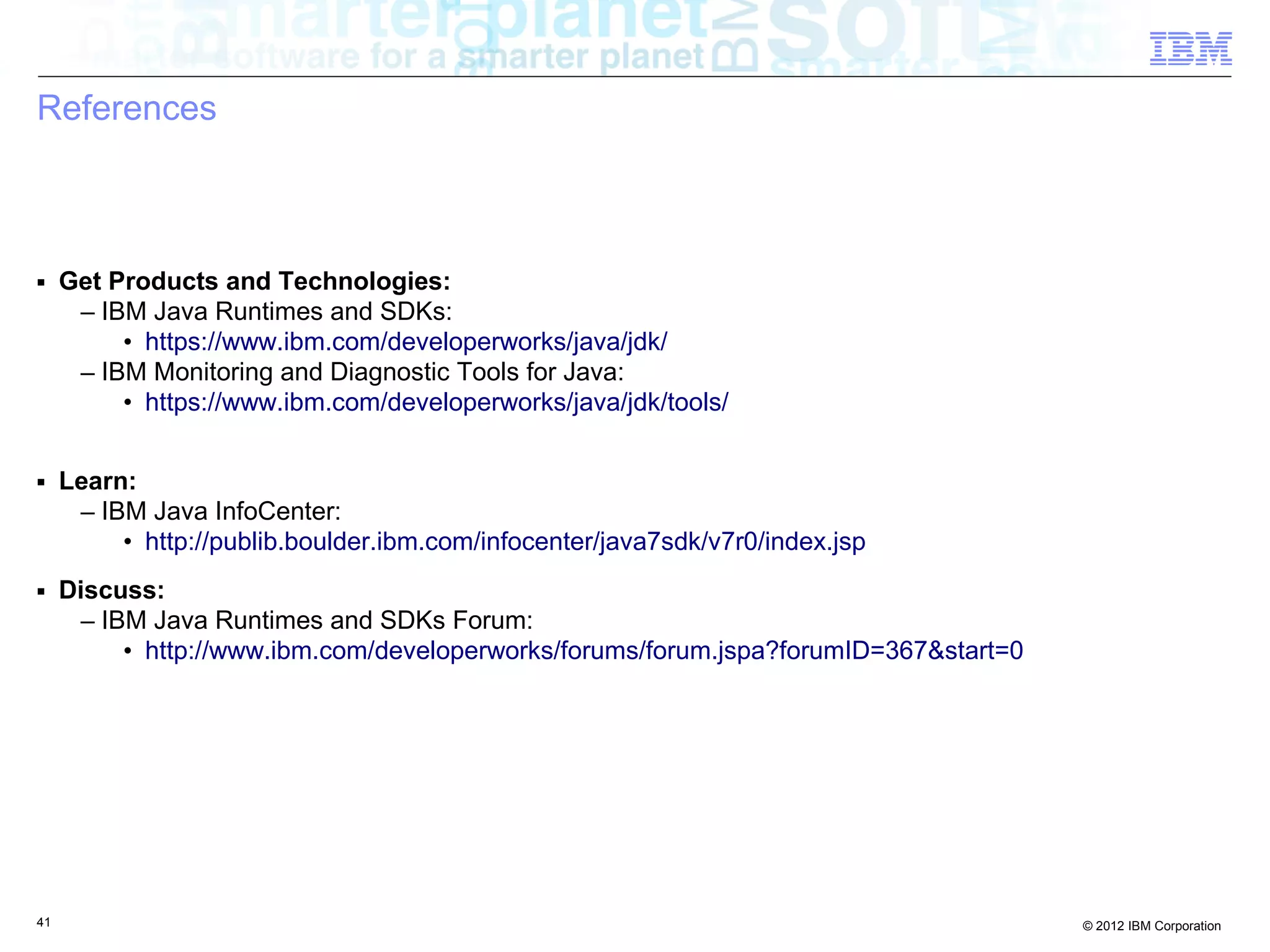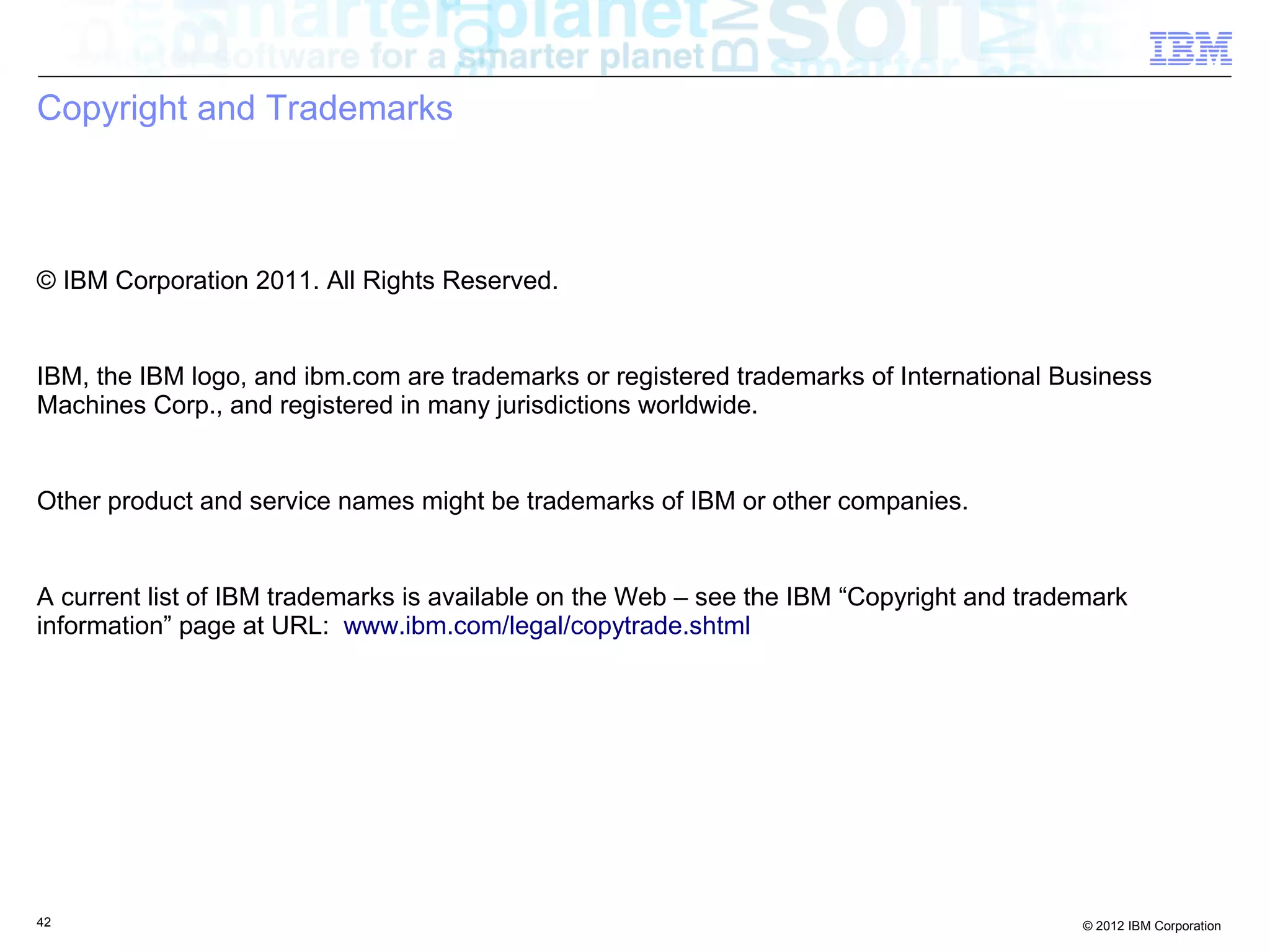The document discusses different methods of embedding scripting languages on the Java Virtual Machine (JVM). It describes how languages can be compiled to Java bytecode, interpreted on the JVM, or embedded within a Java application. It also examines models for scripting on the JVM, including having scripts invoke Java code or Java code invoke scripts. Finally, it compares two popular embedding frameworks.
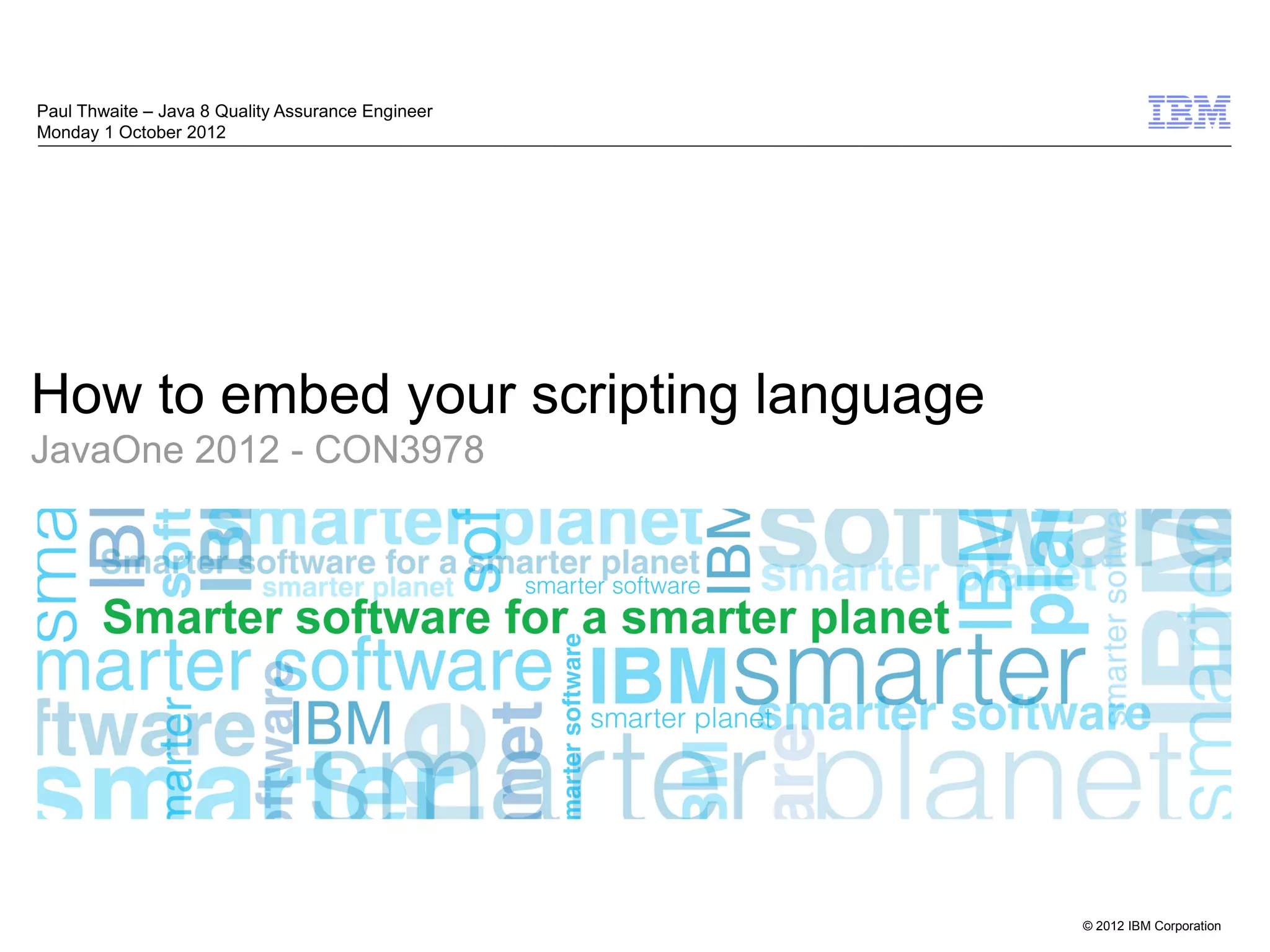
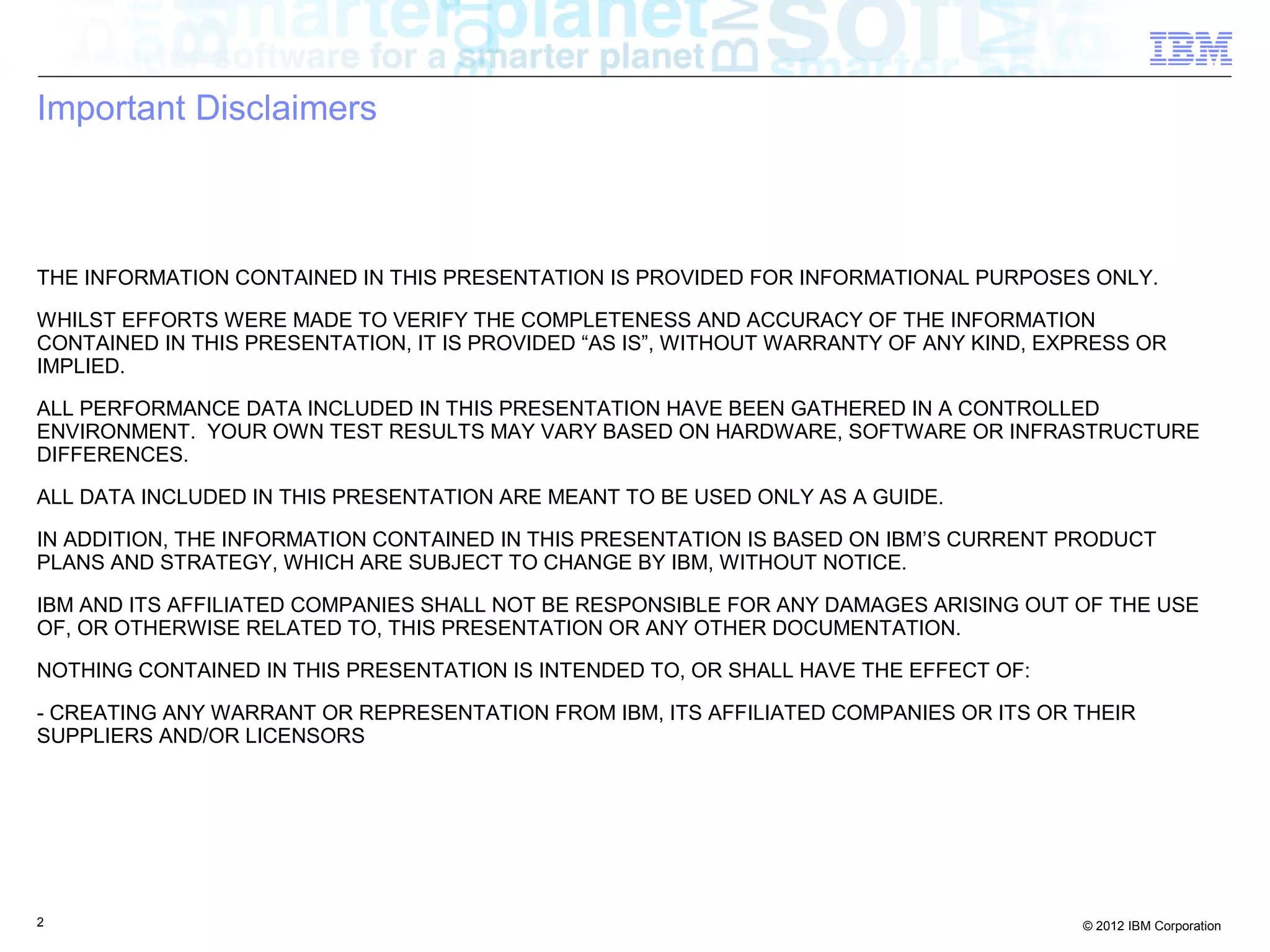
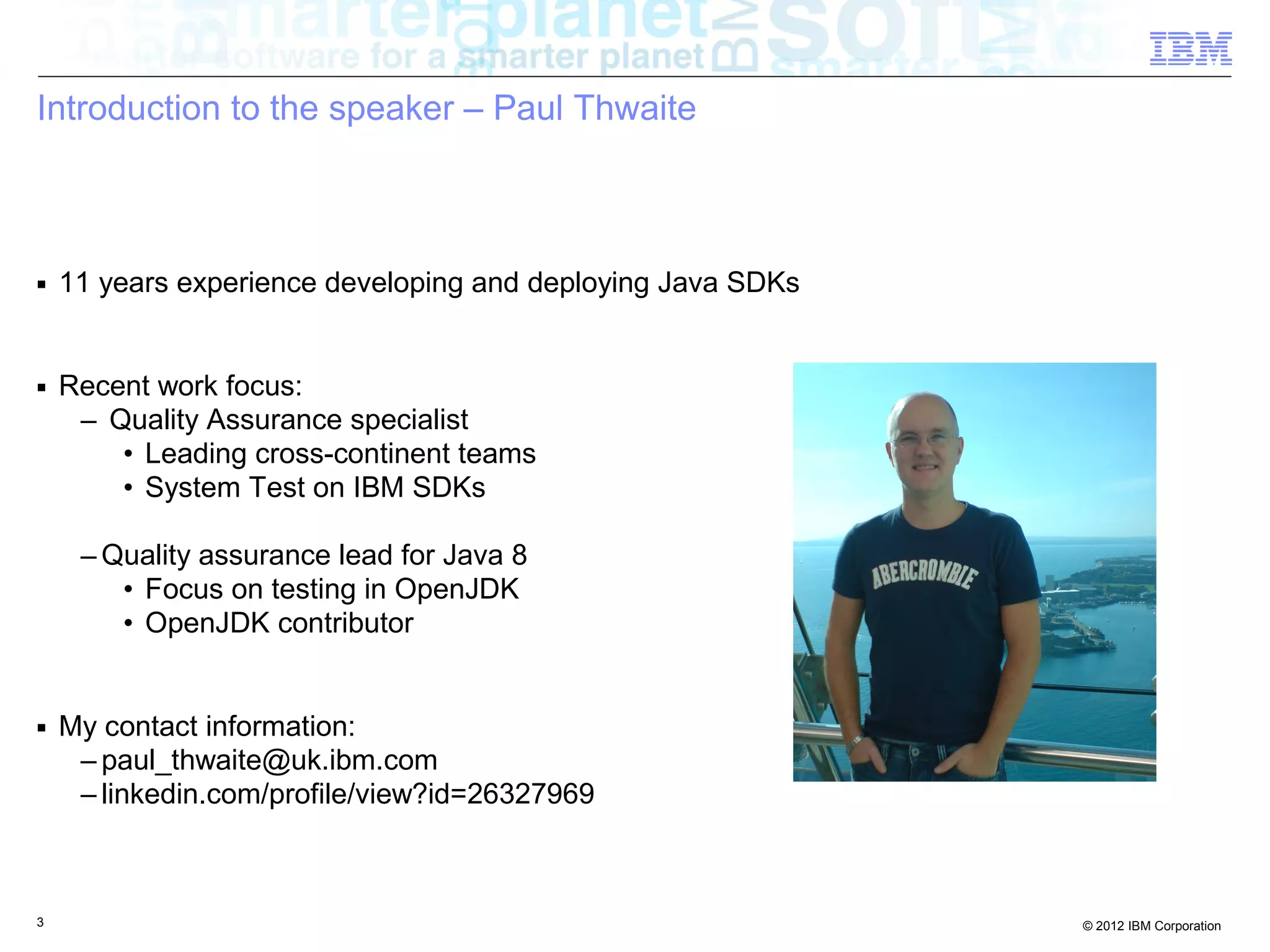
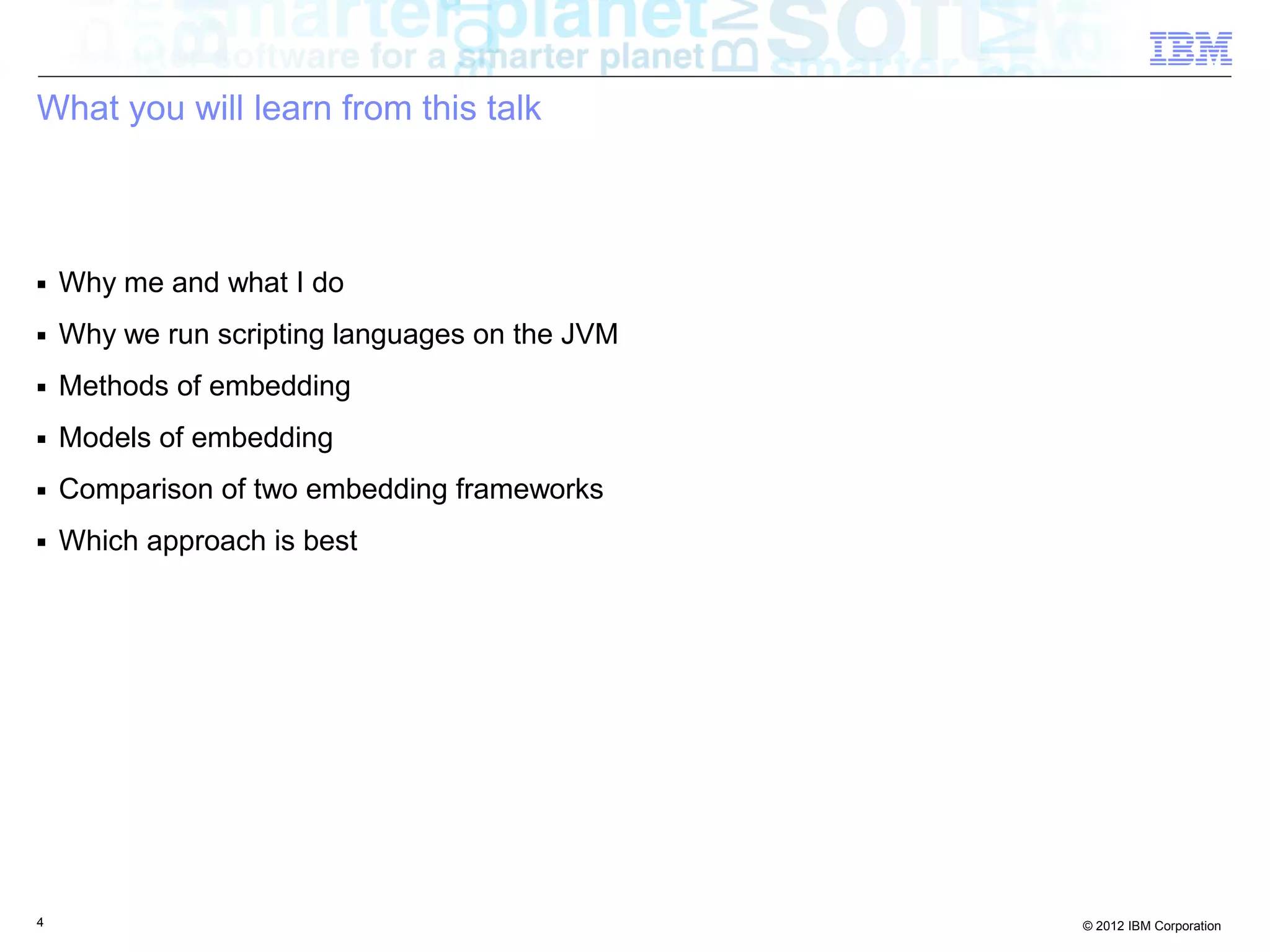
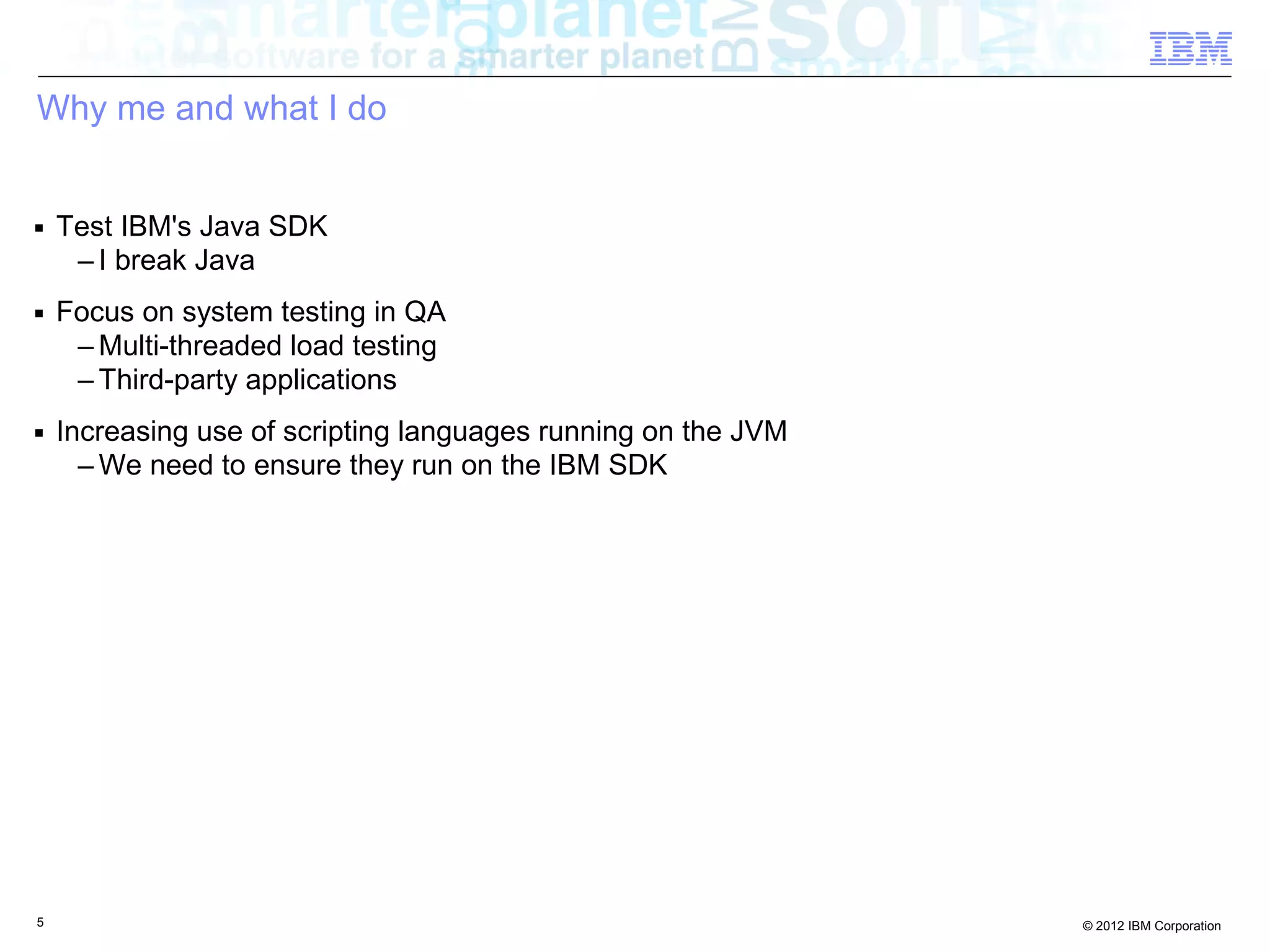
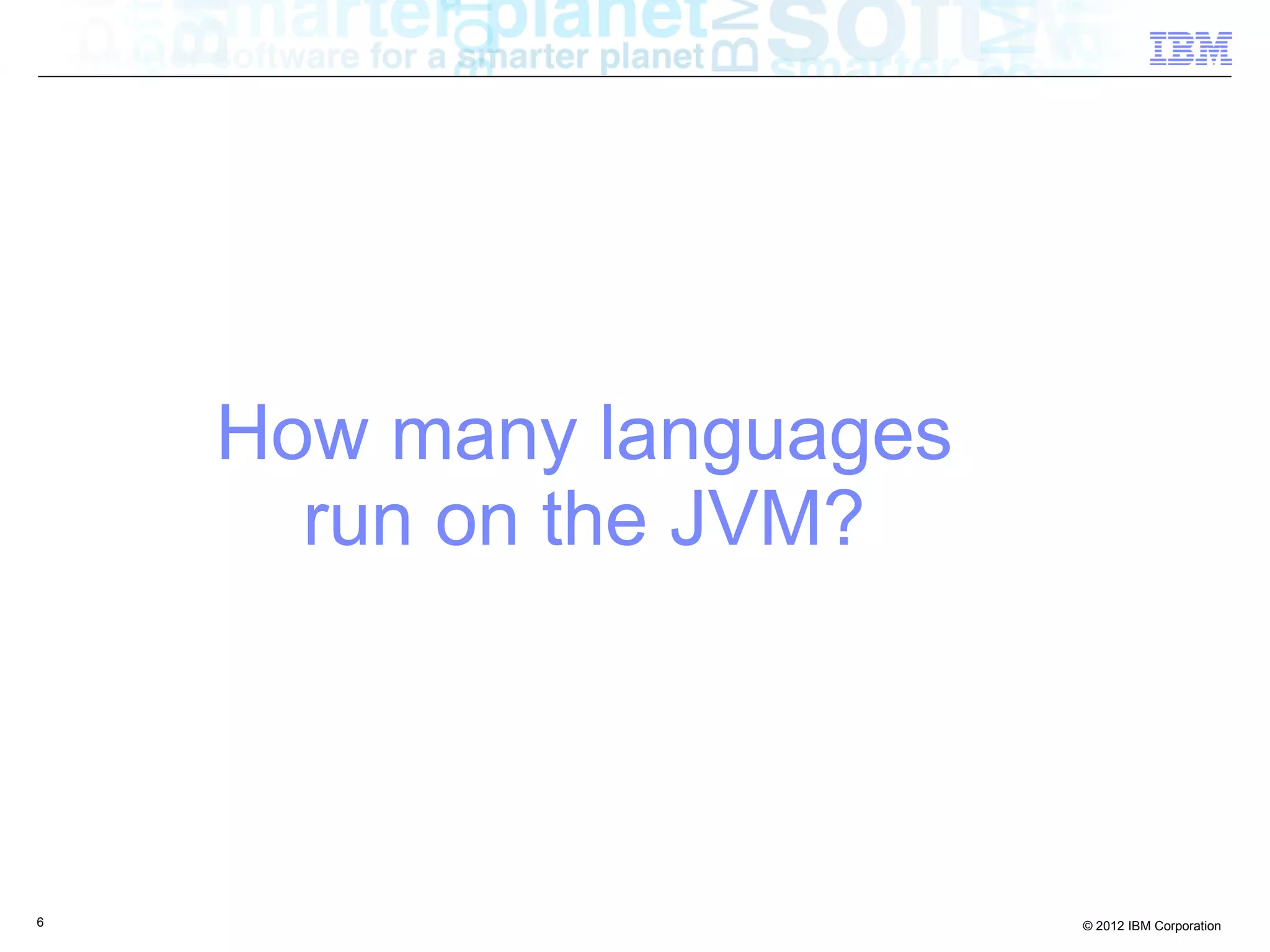
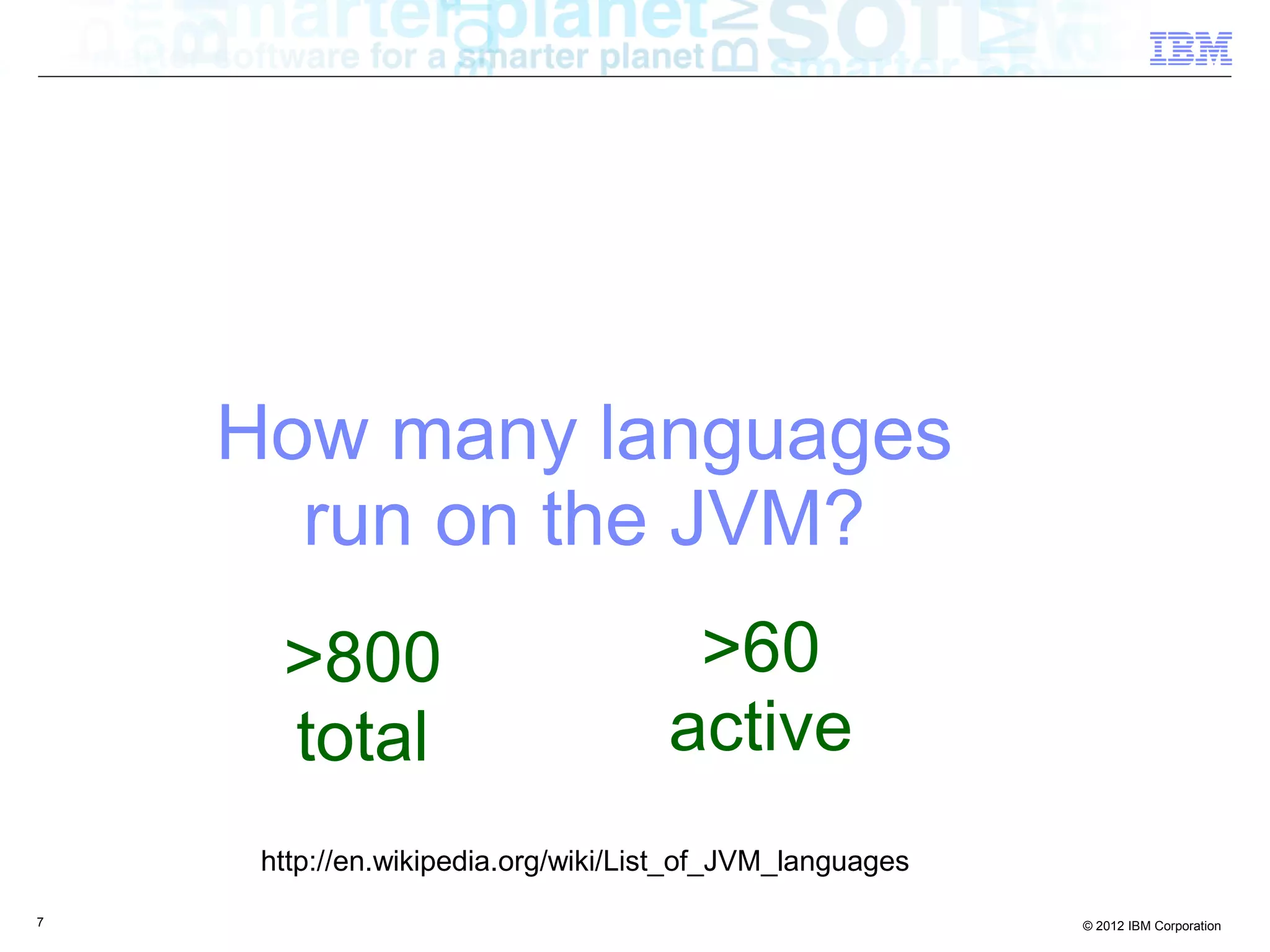
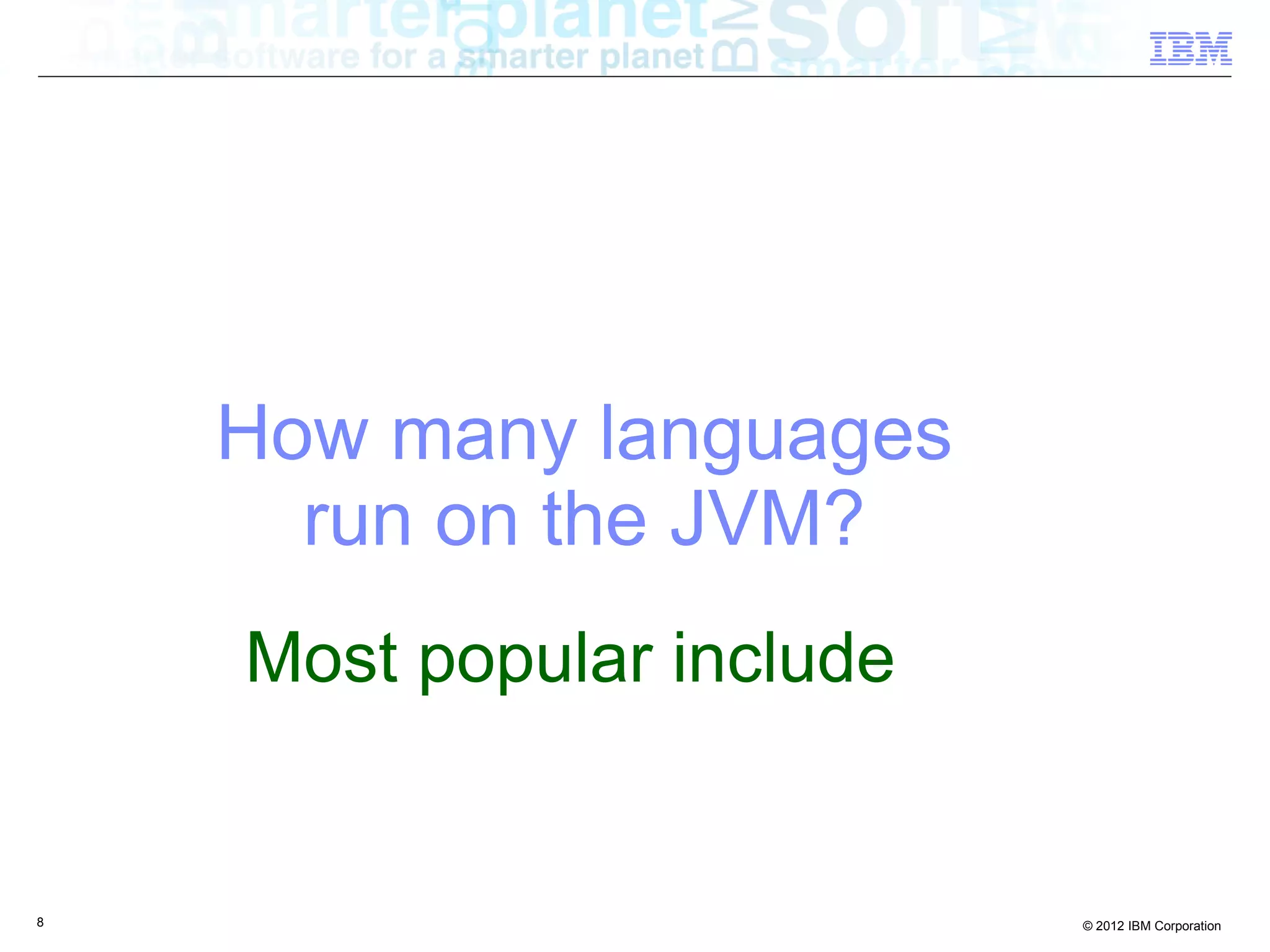
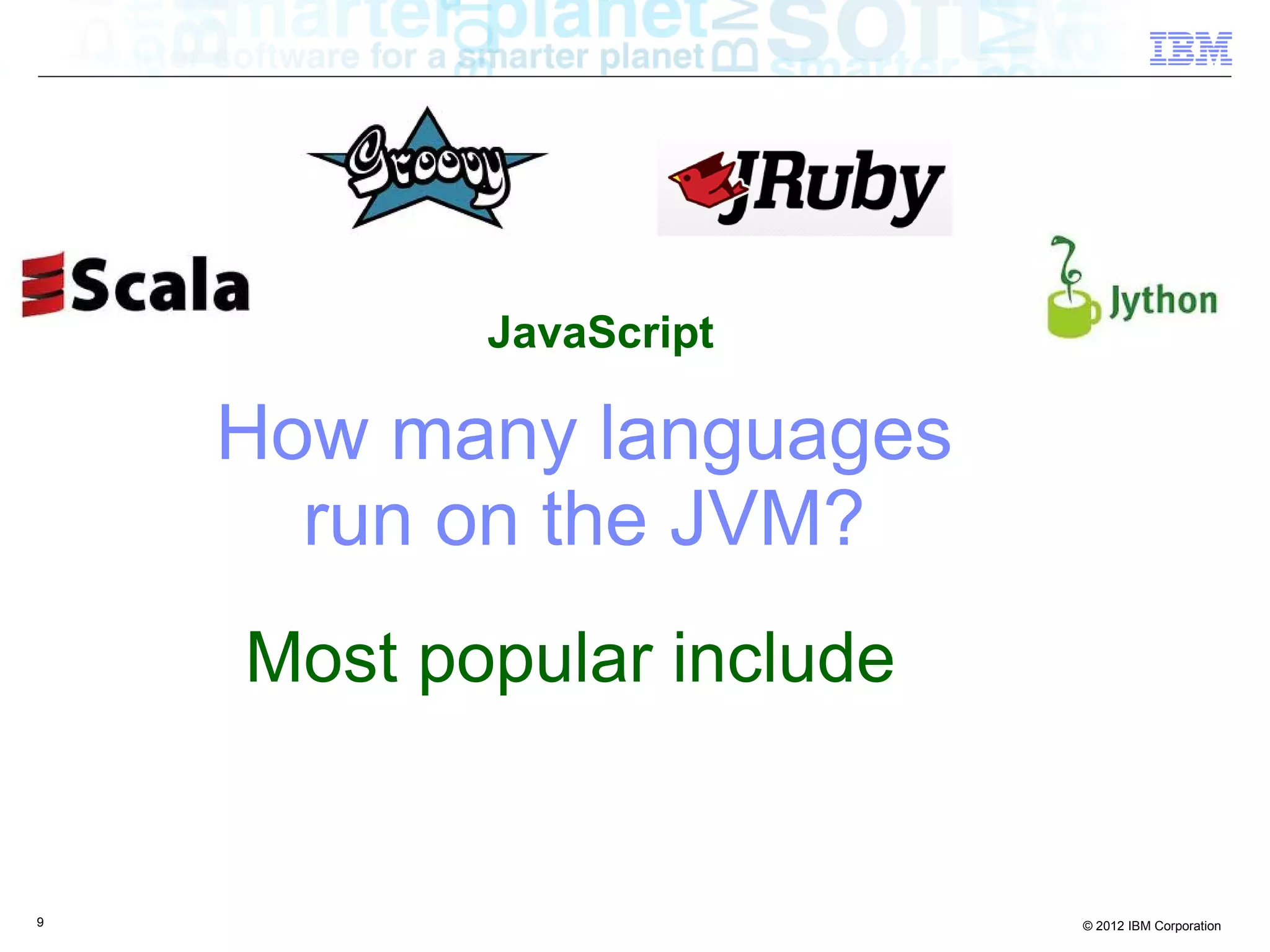
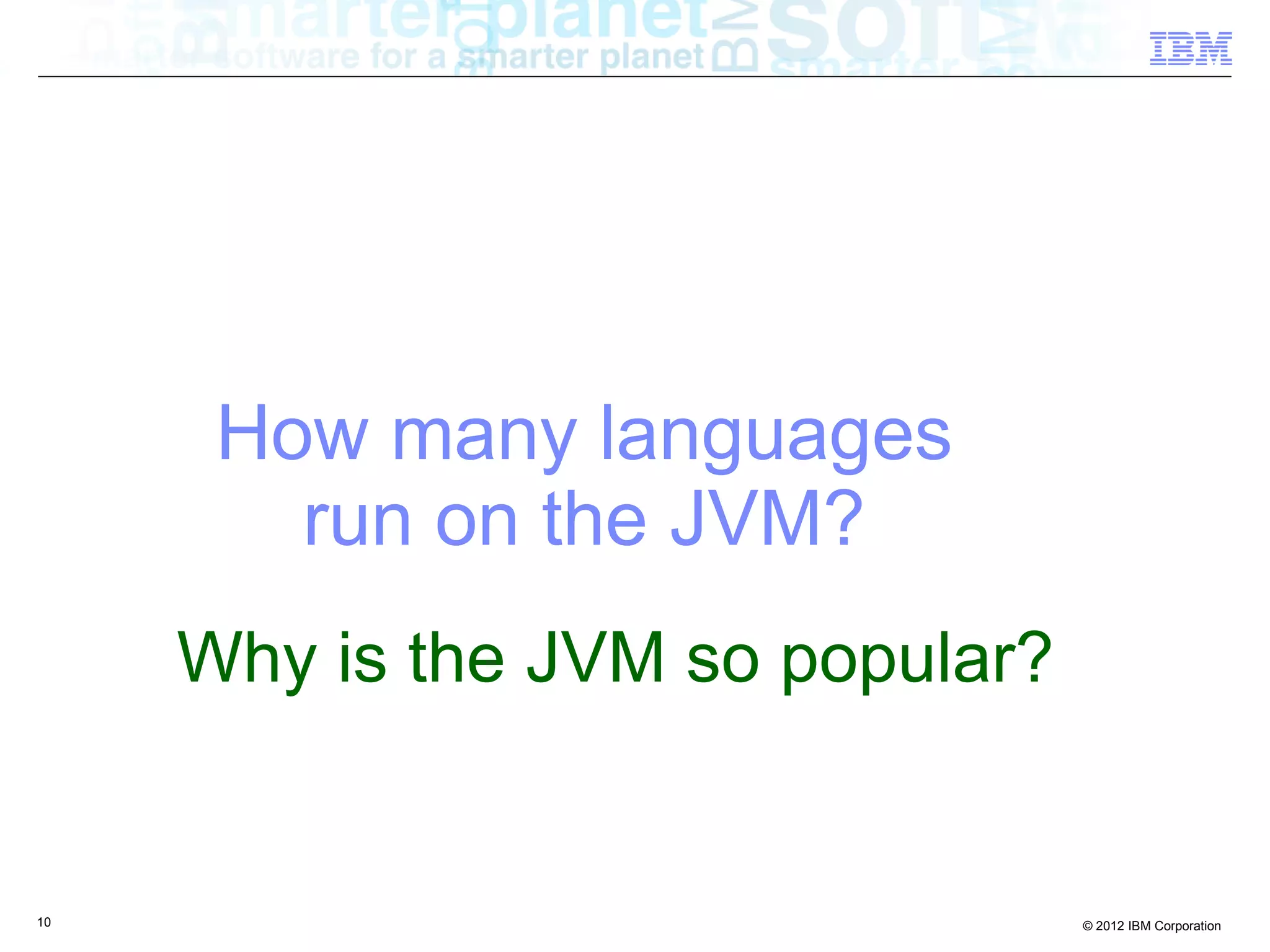
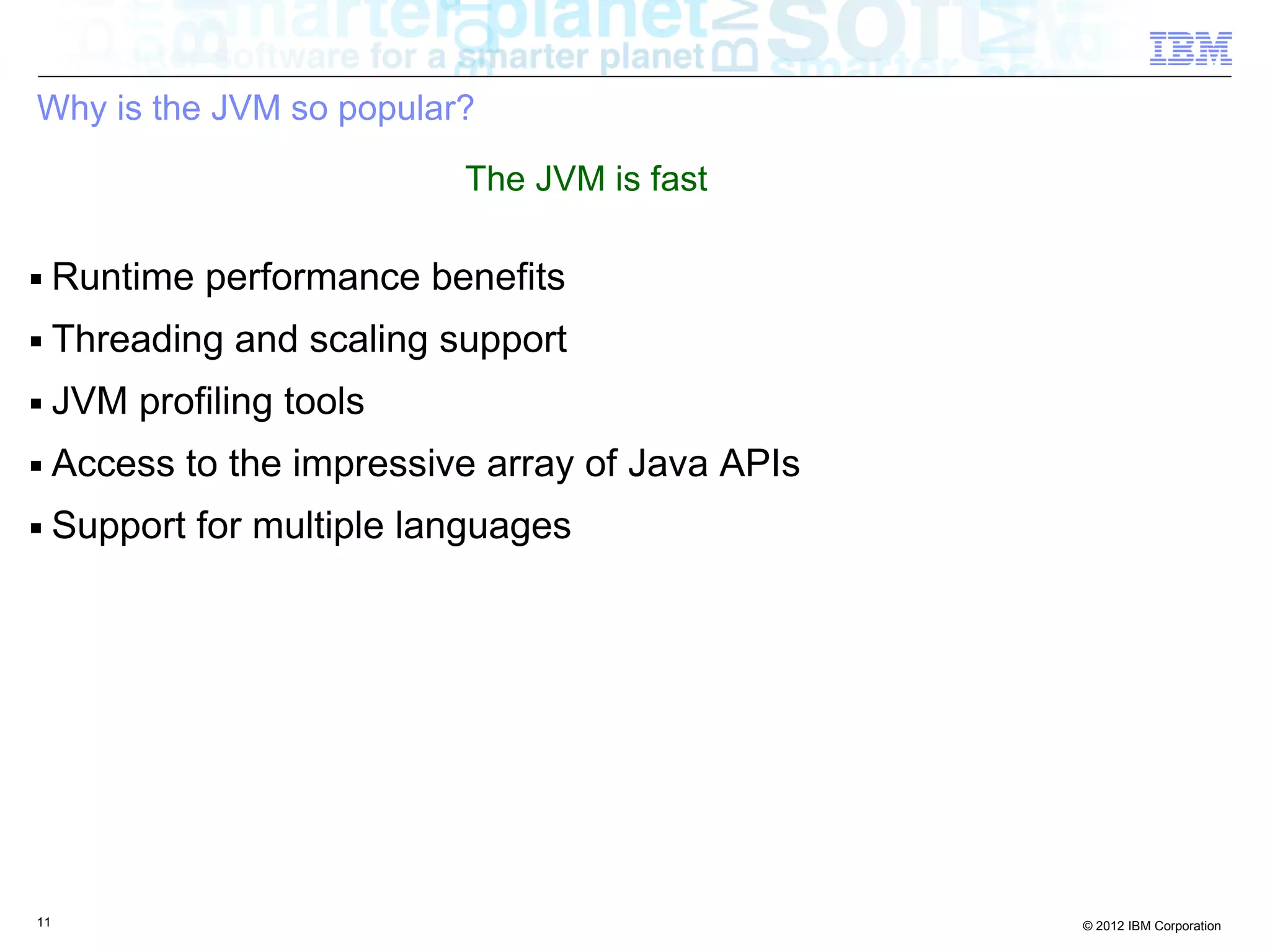
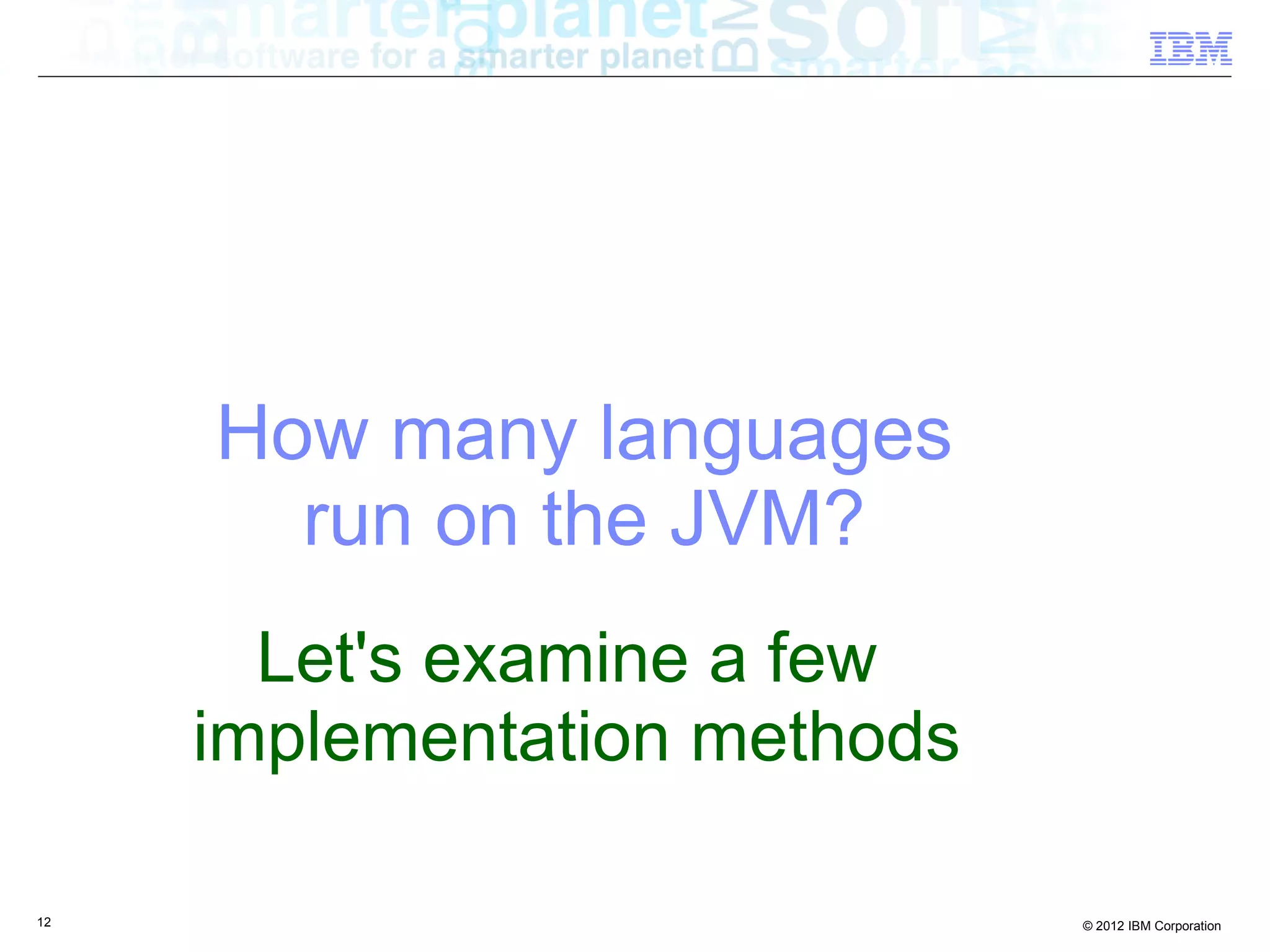
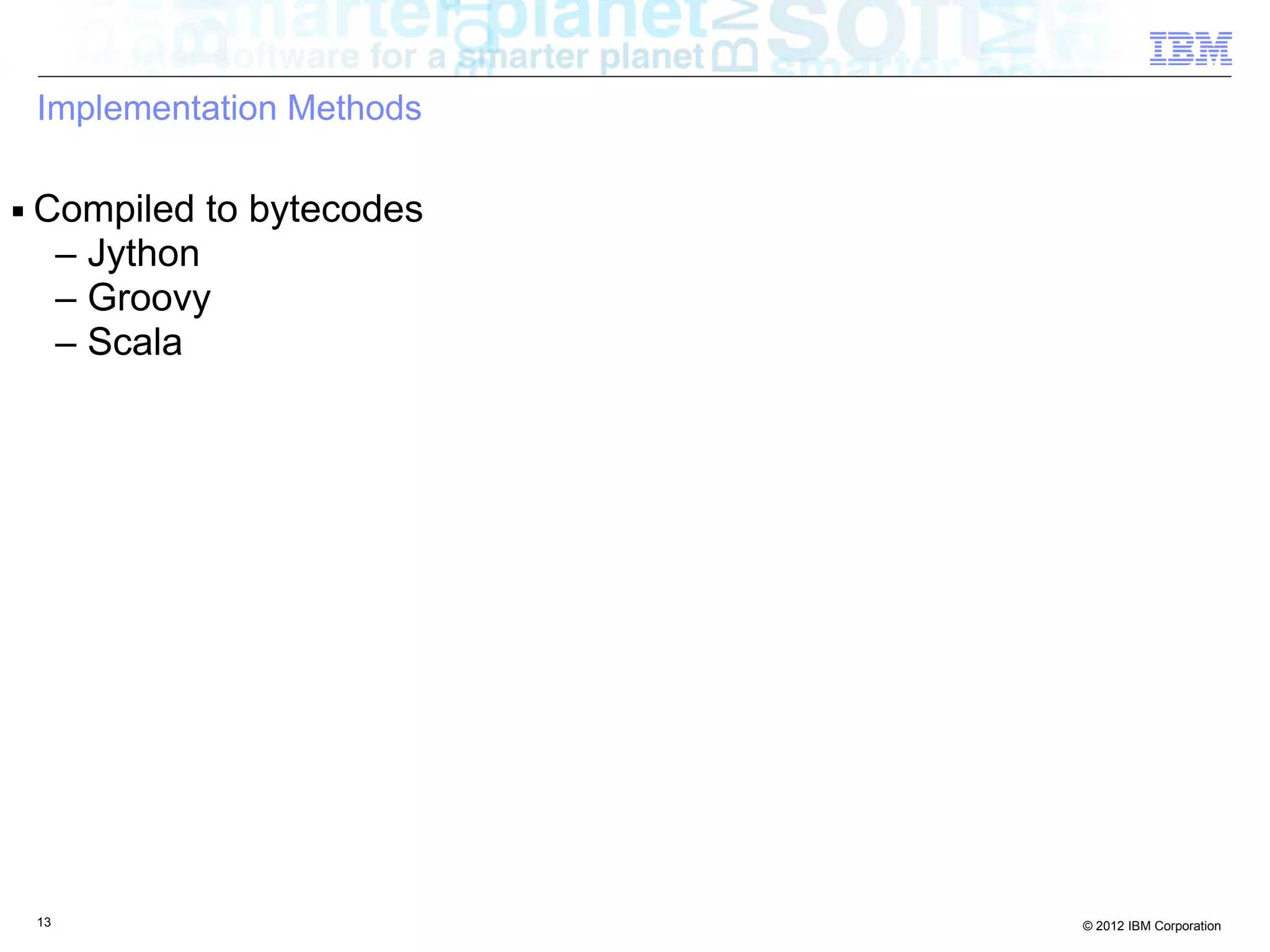
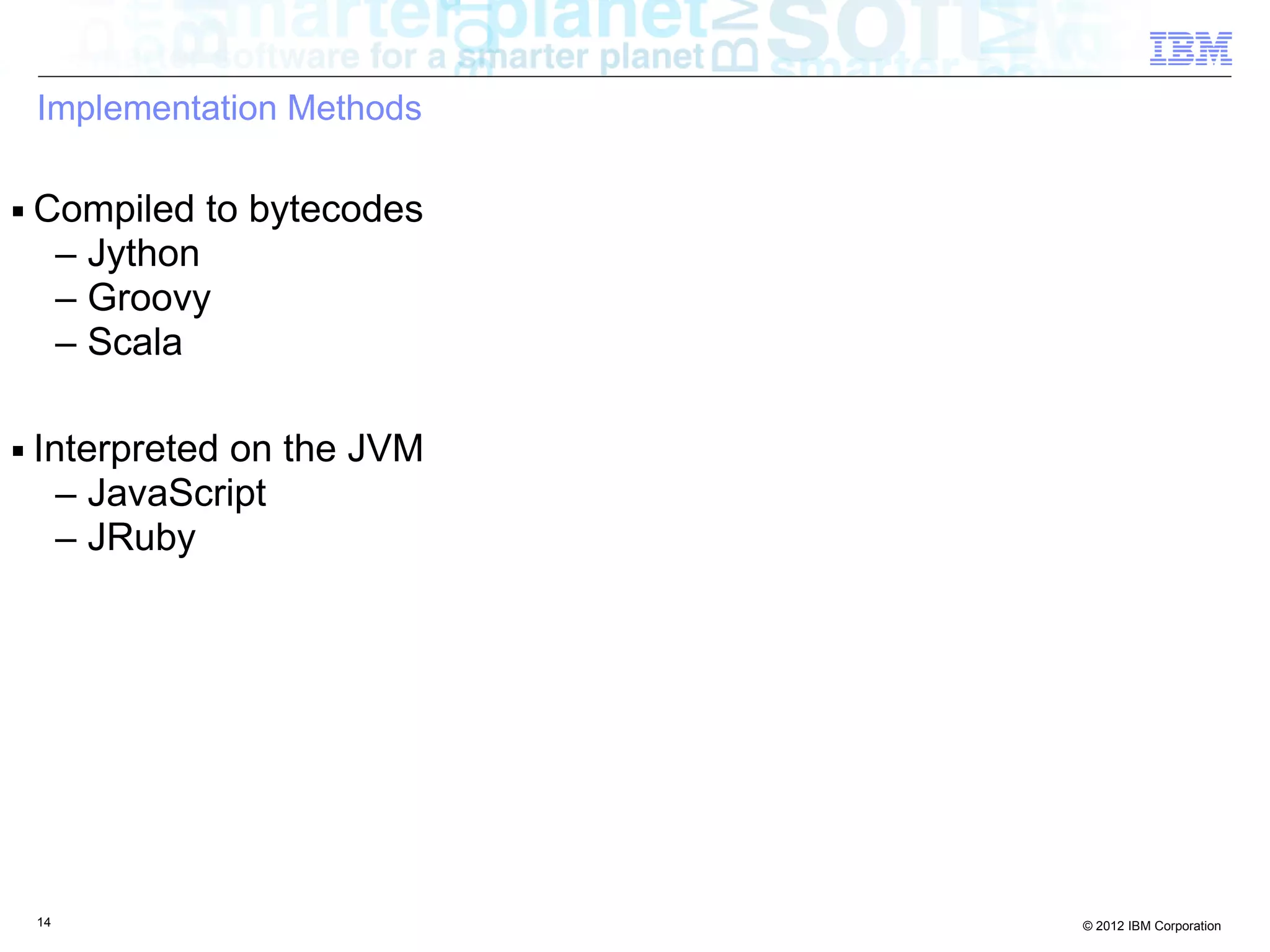
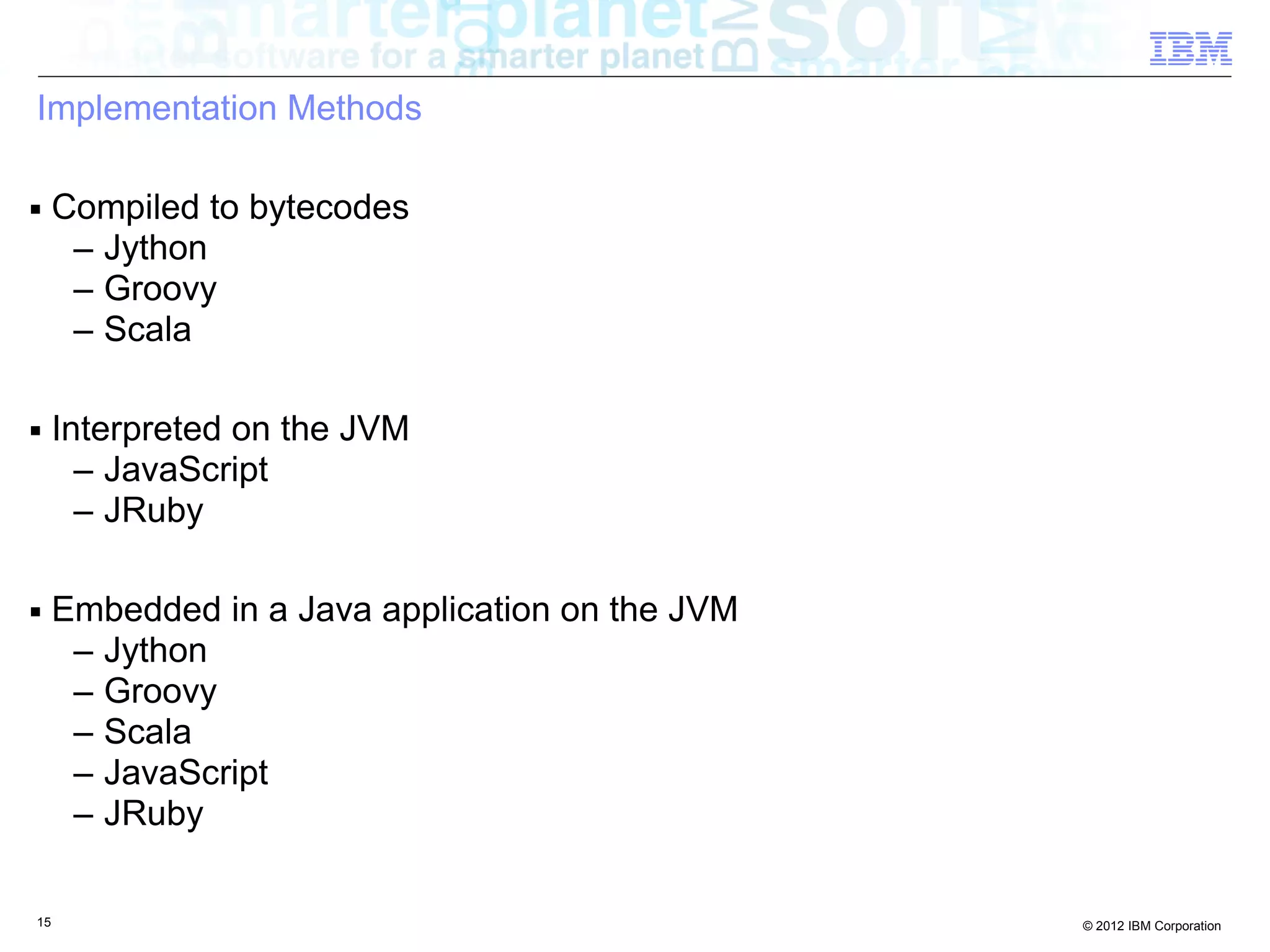
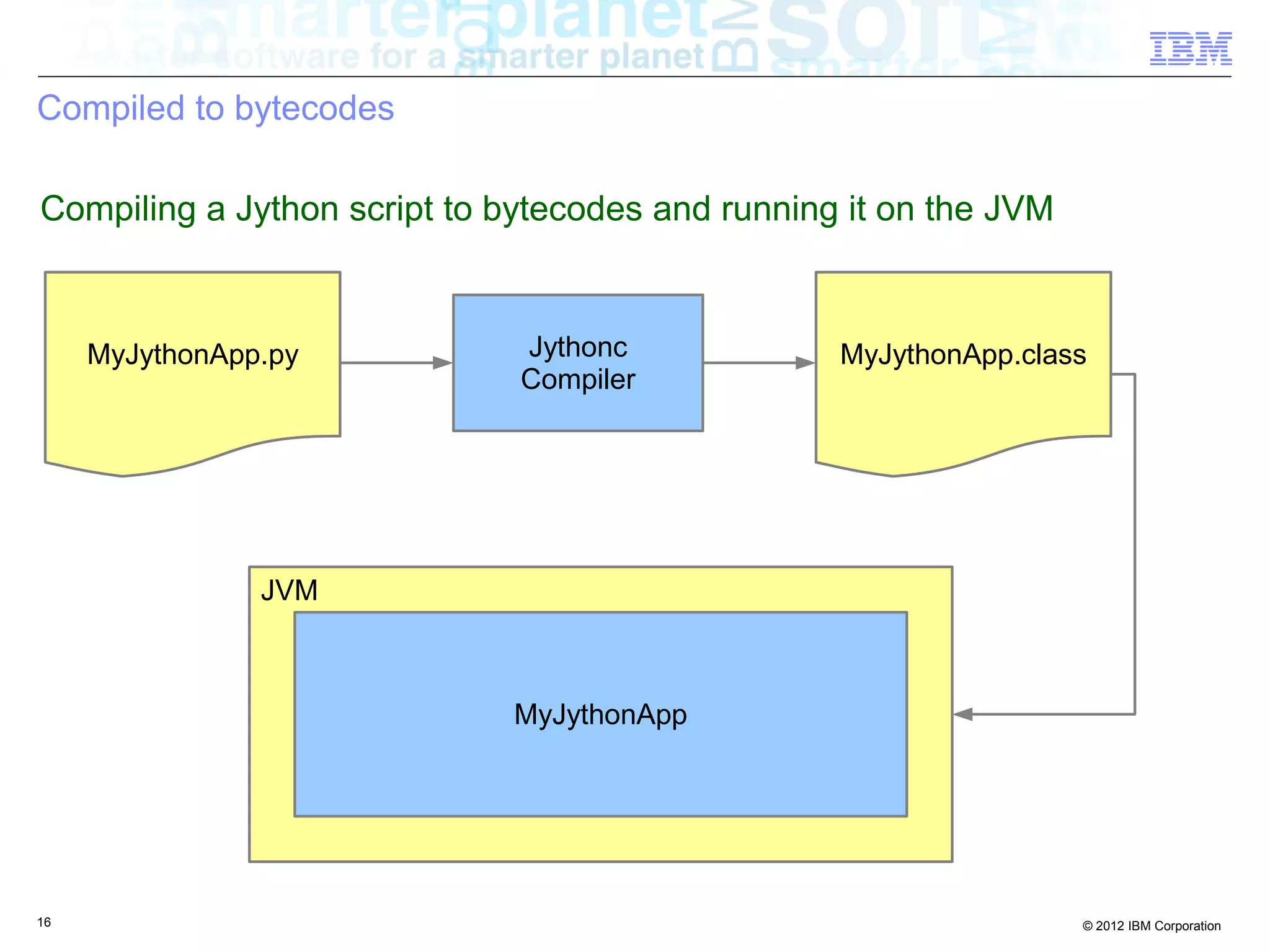
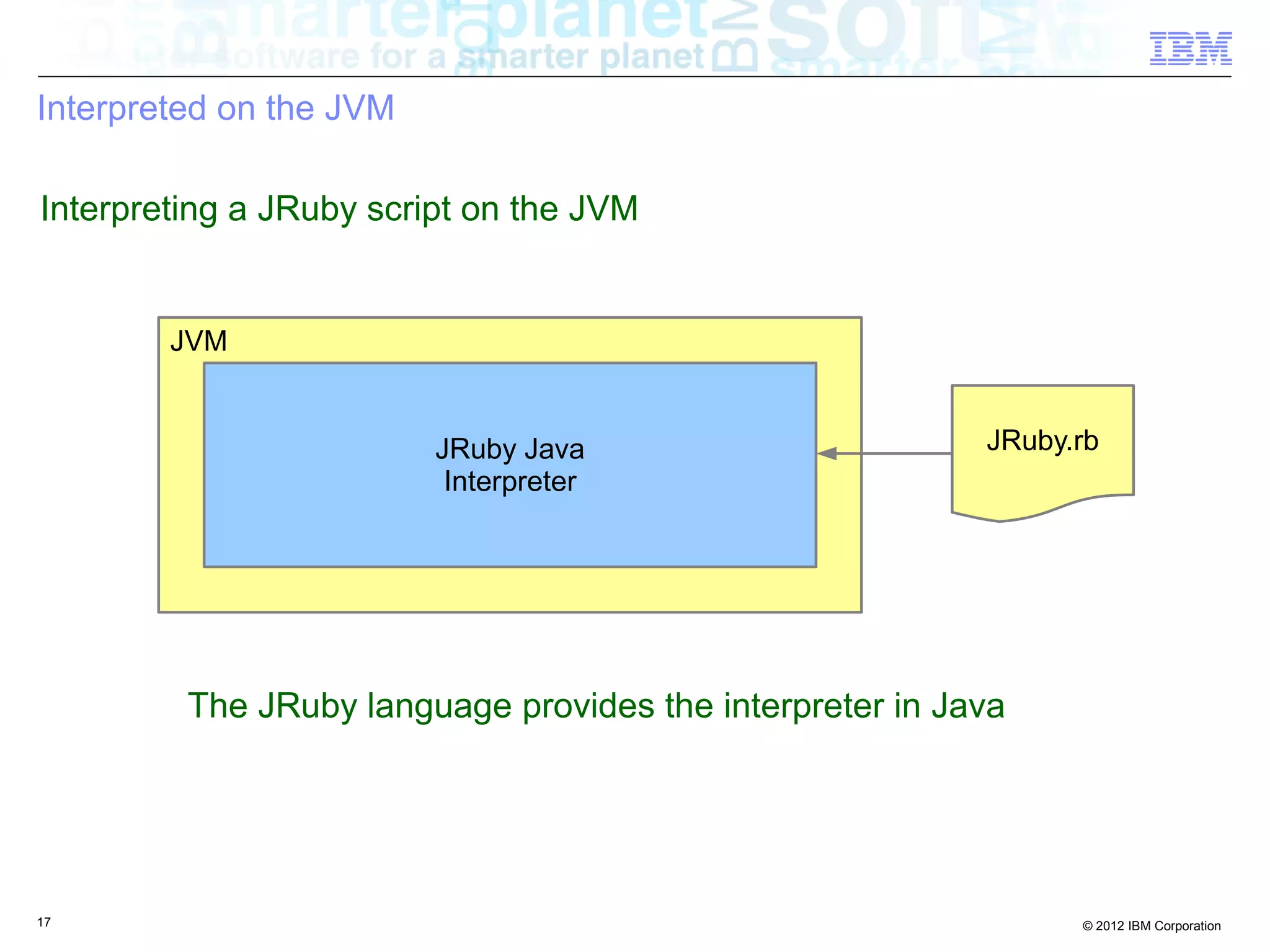
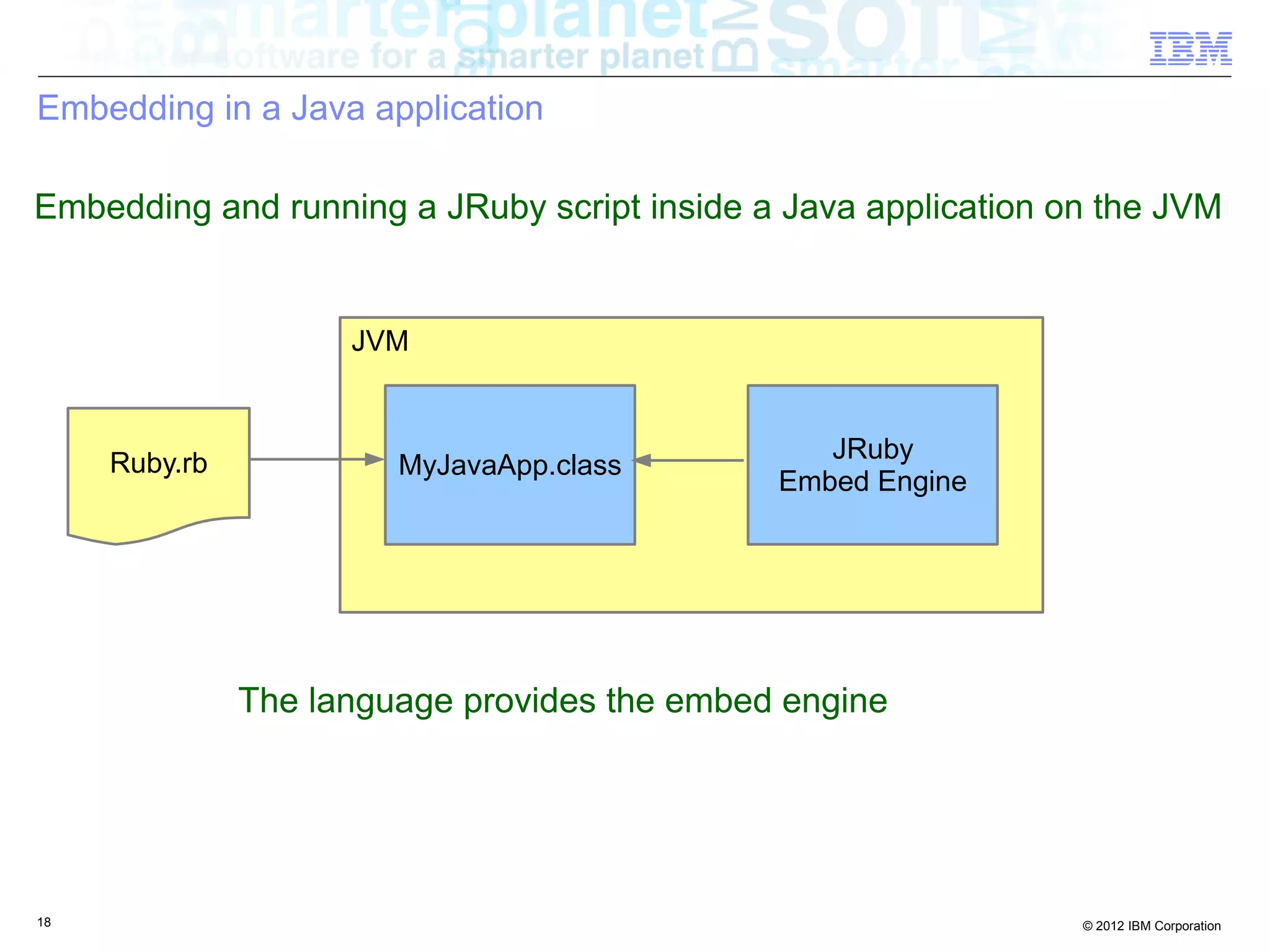
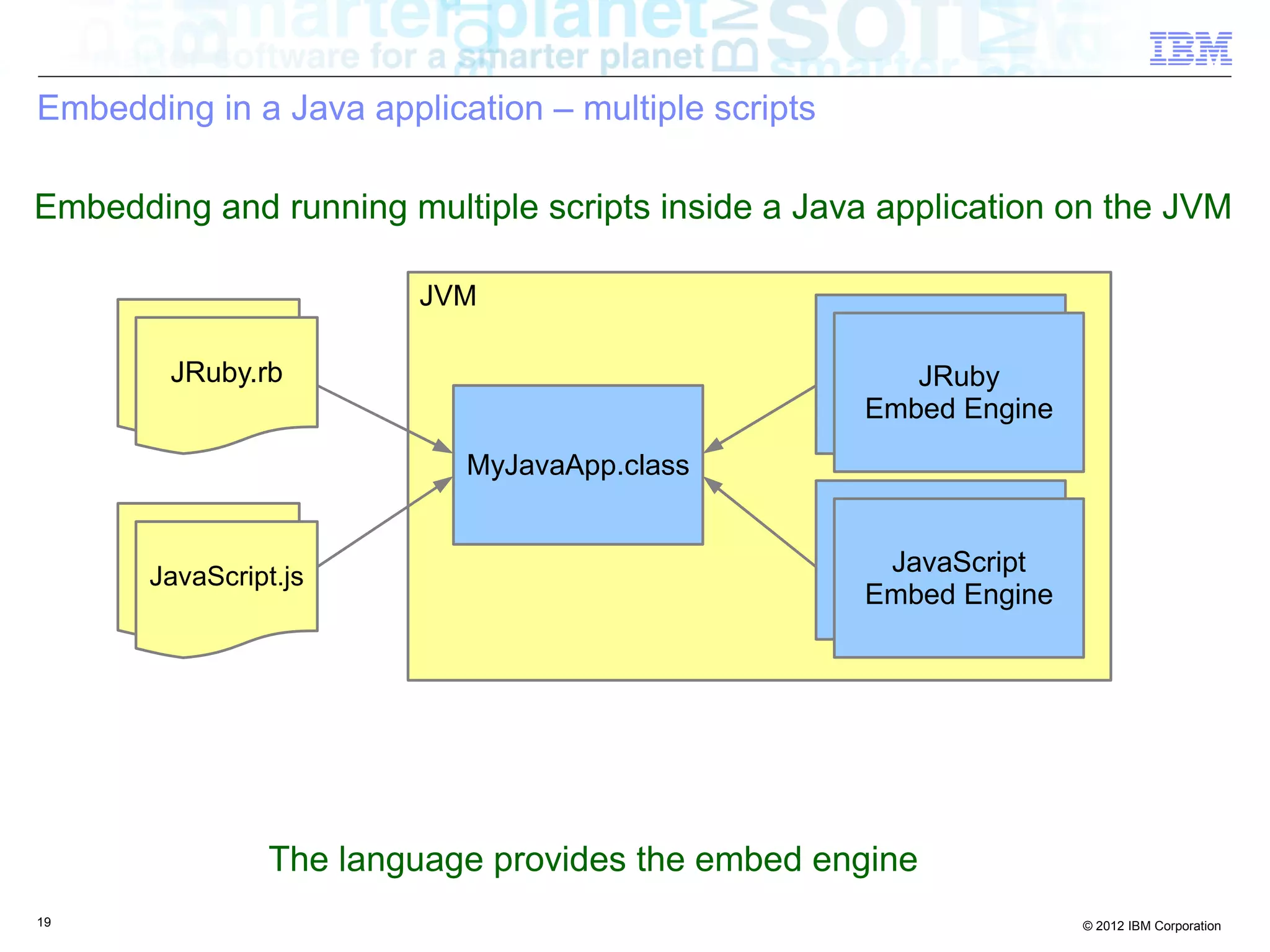
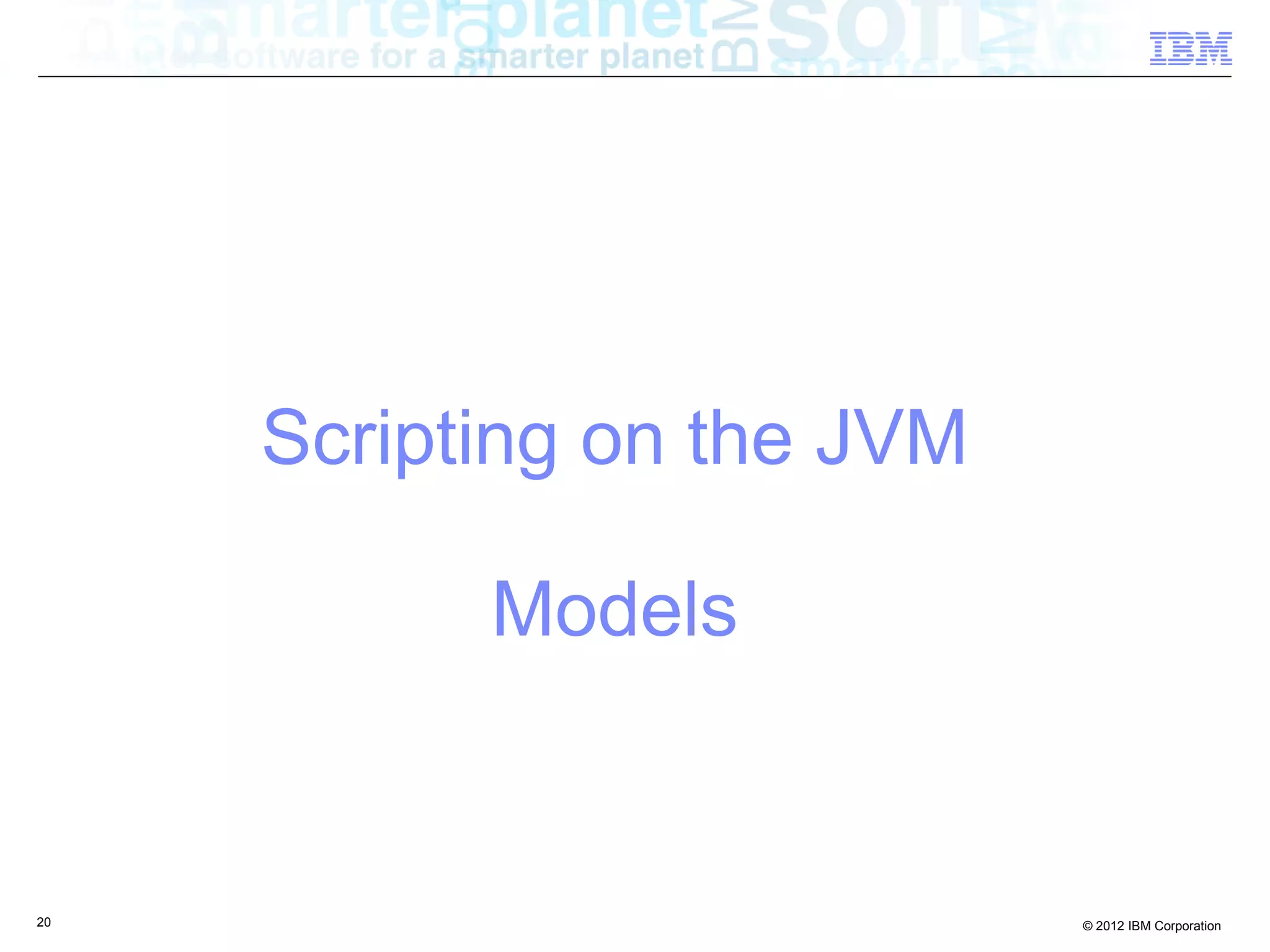
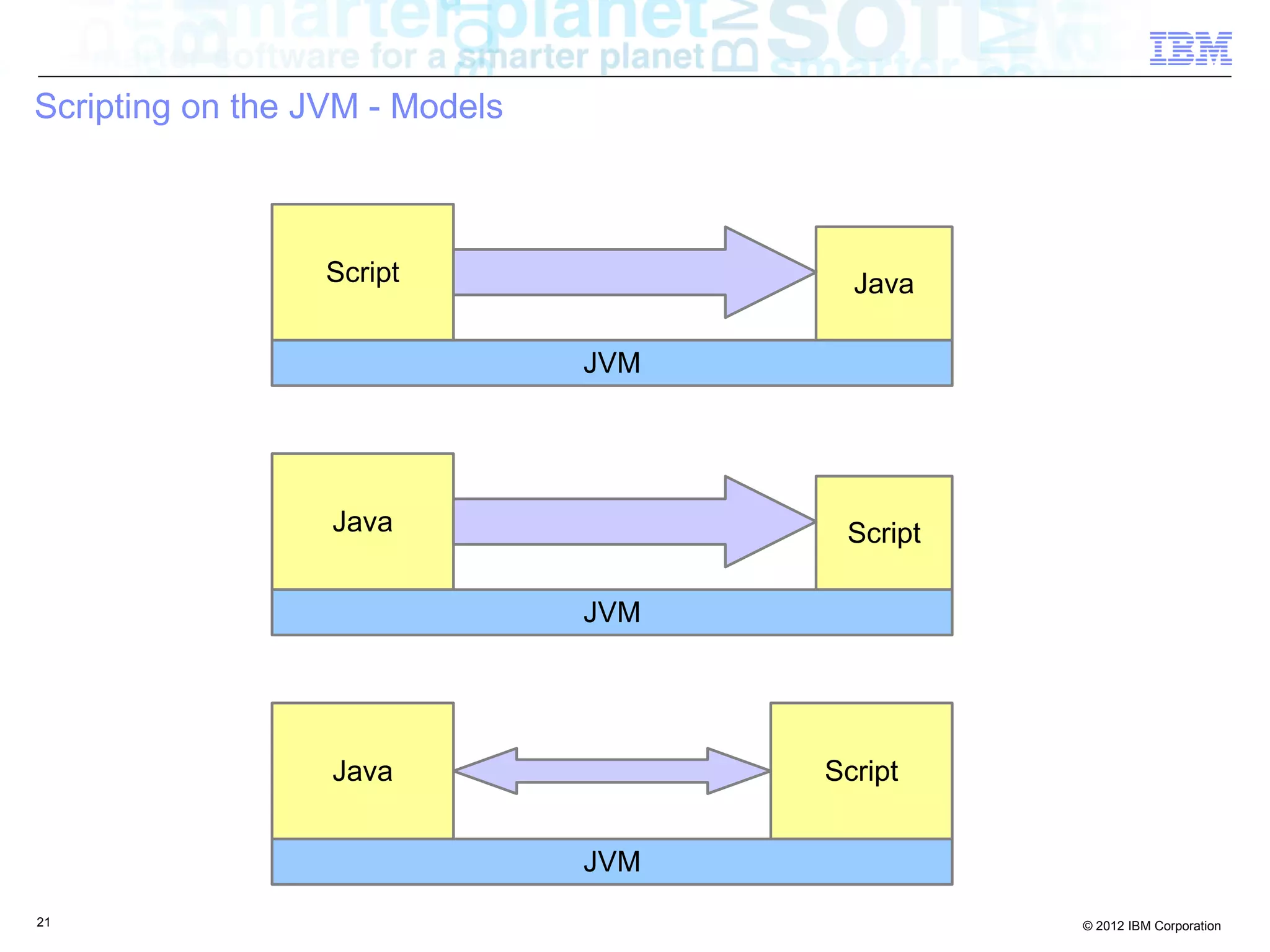
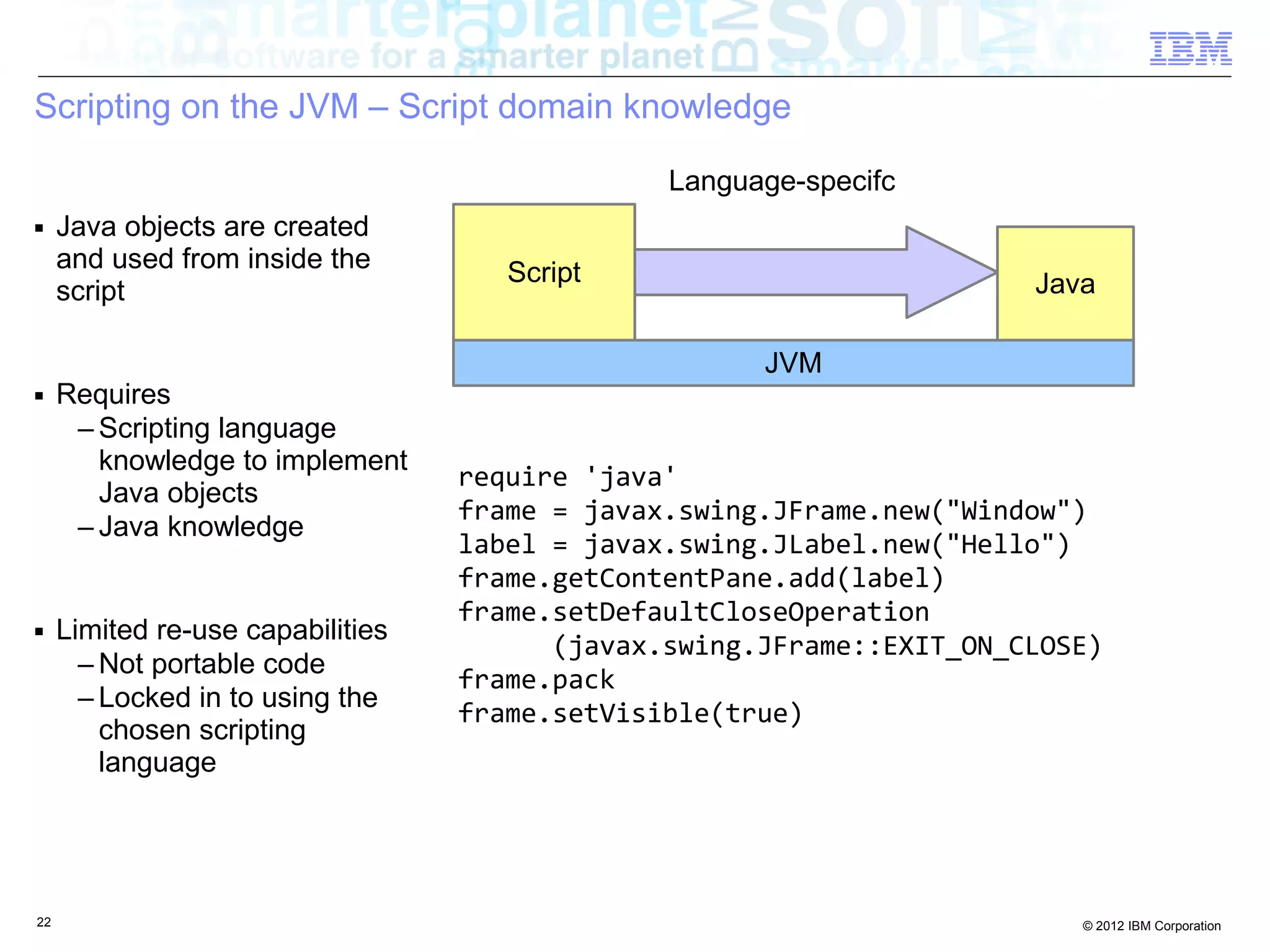
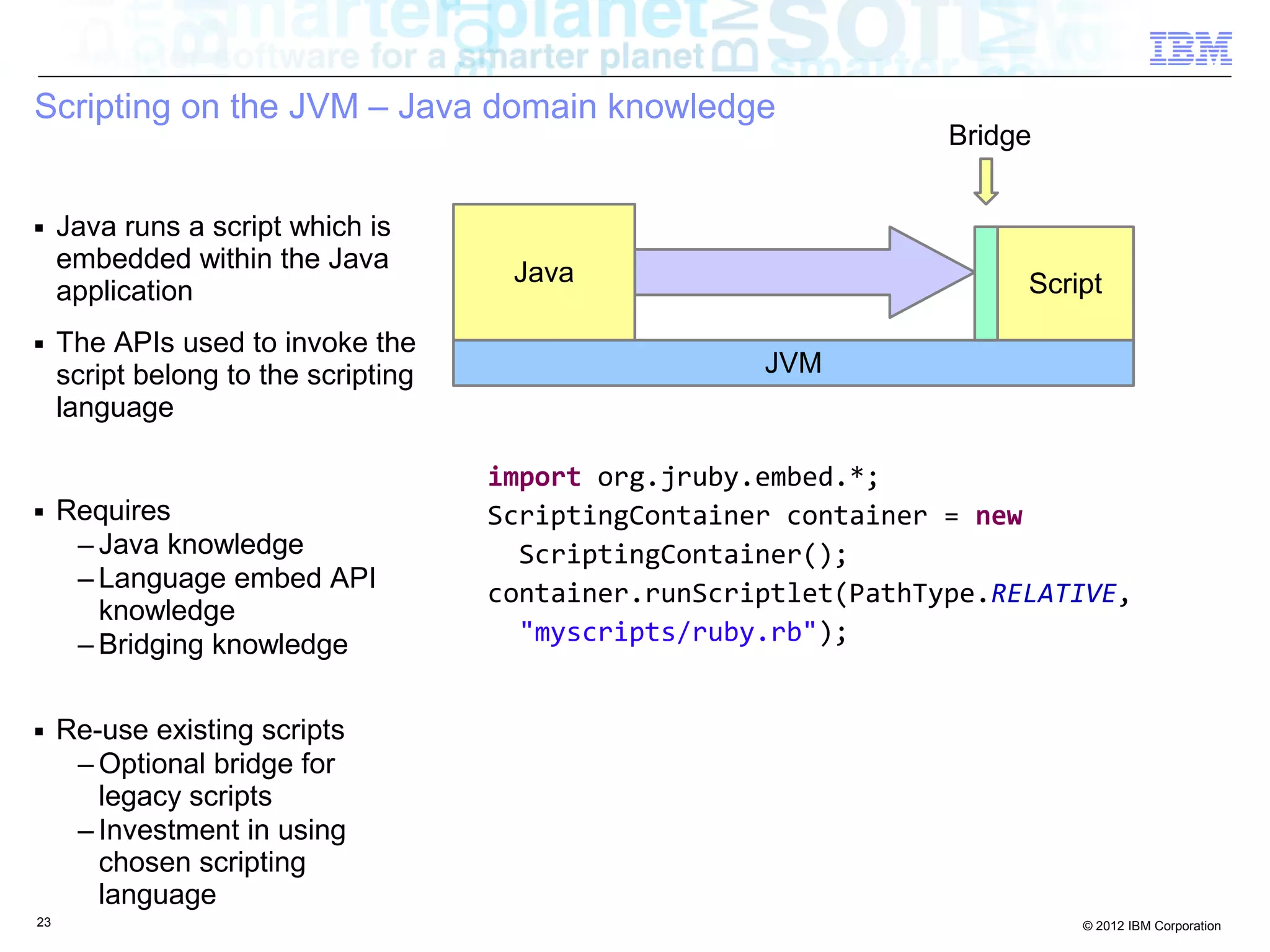
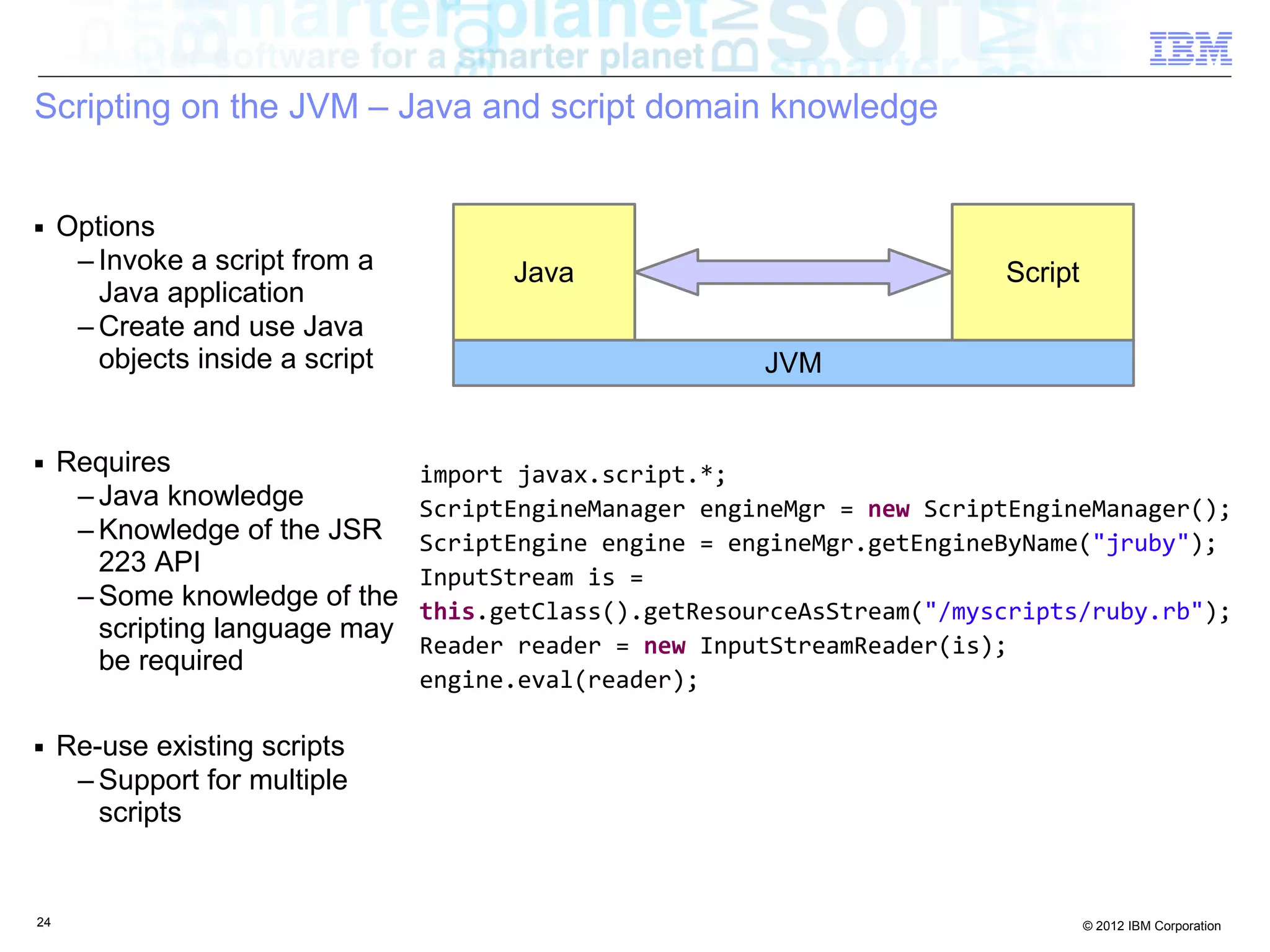
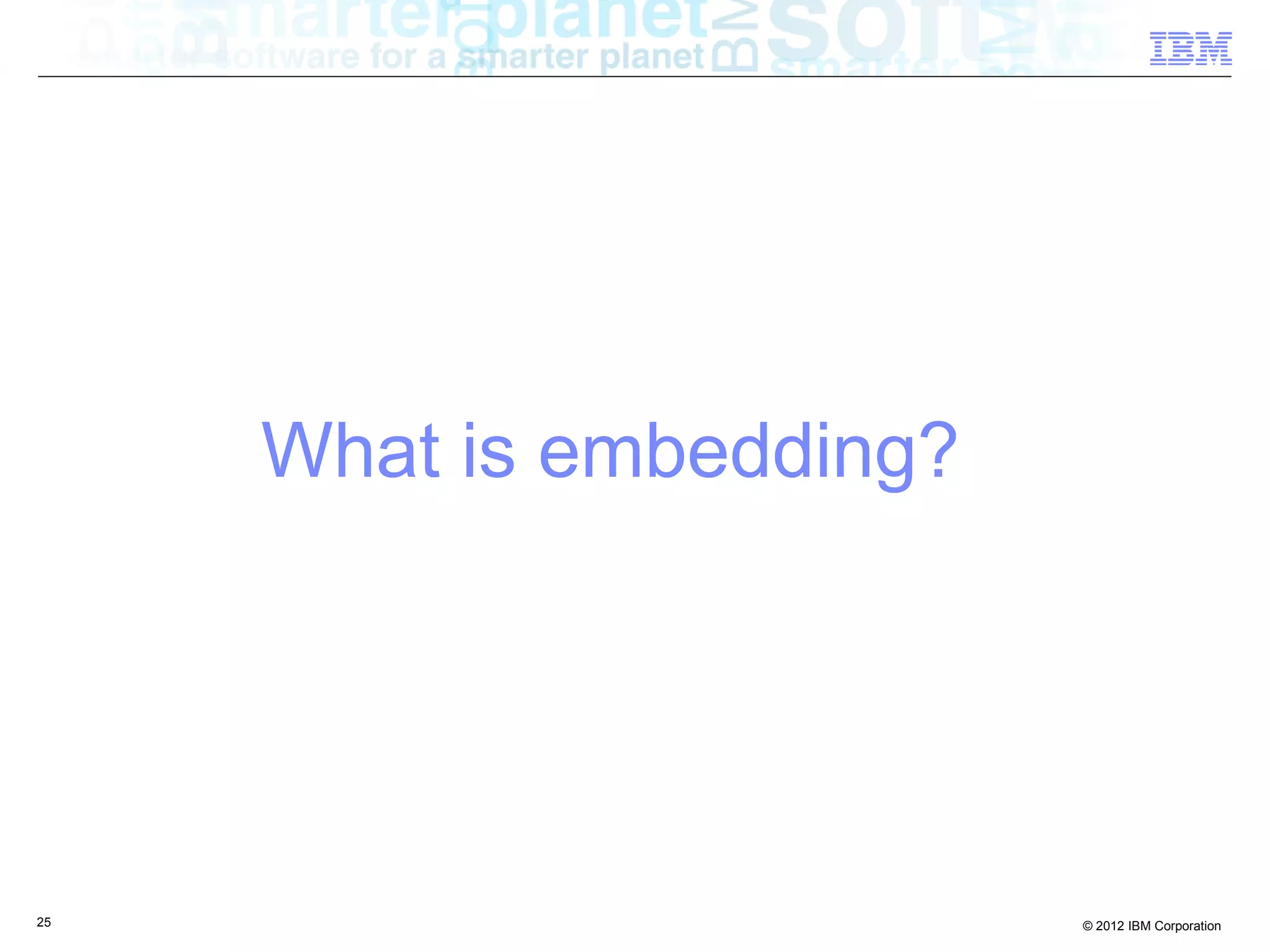
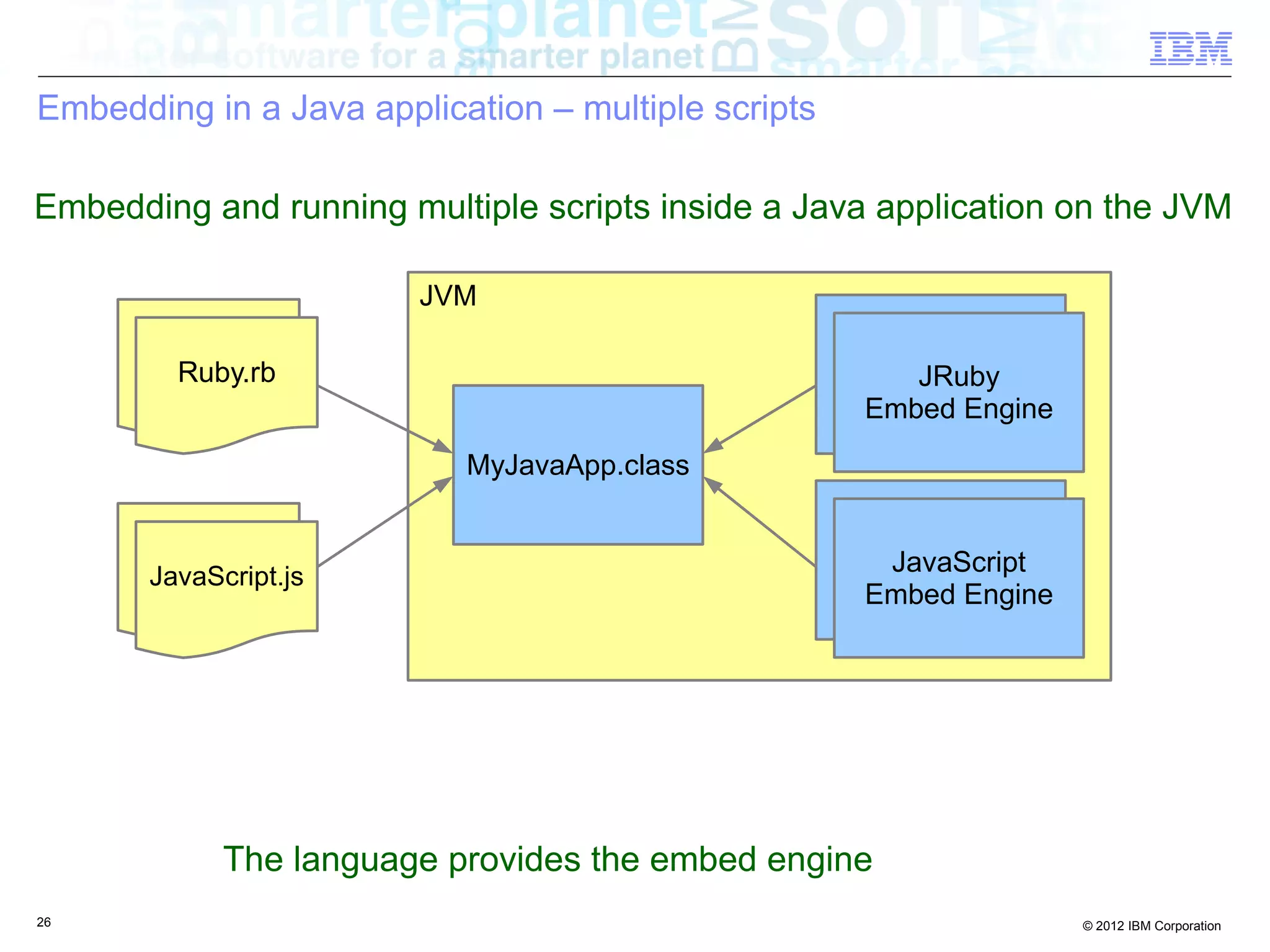
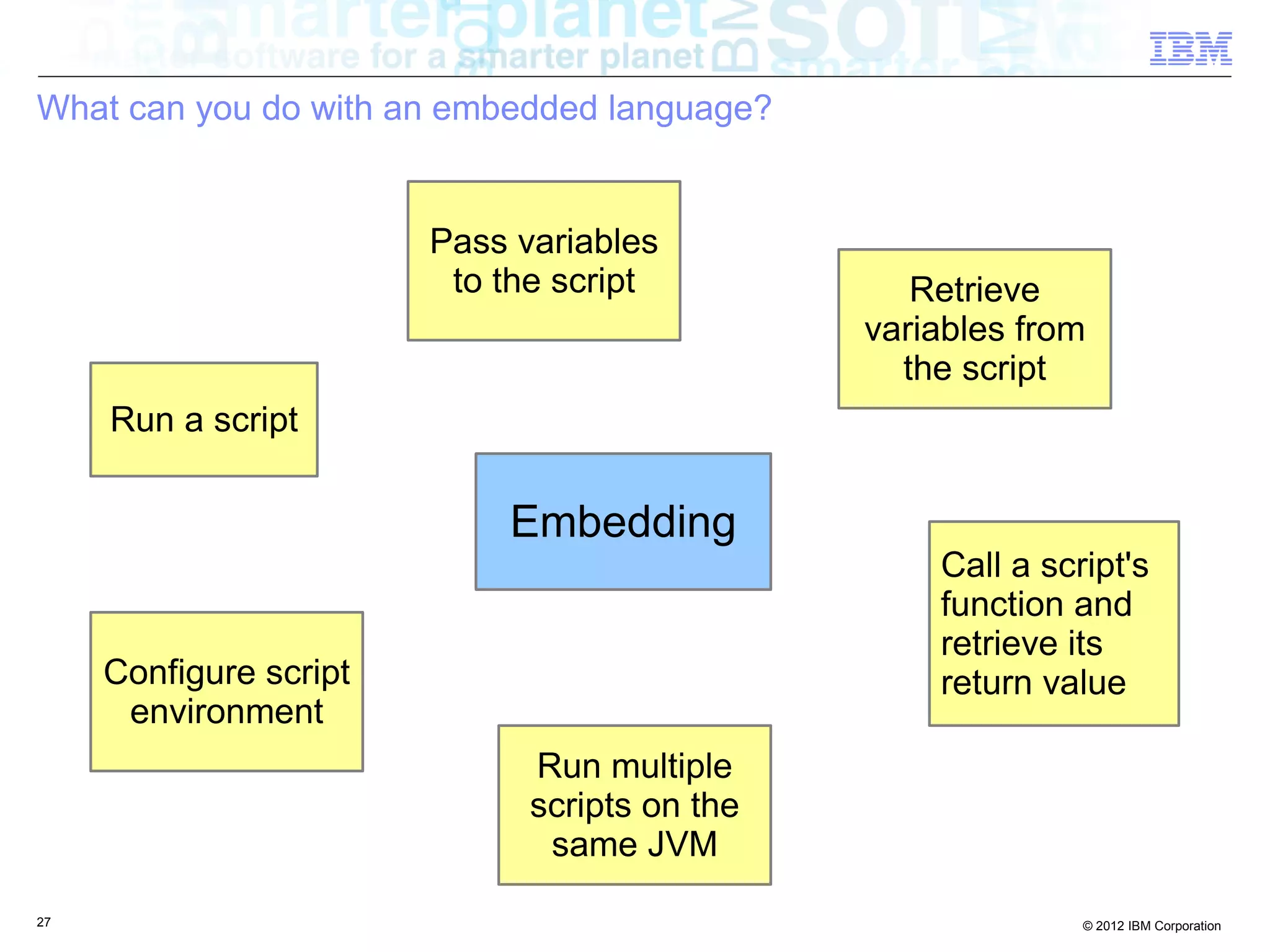
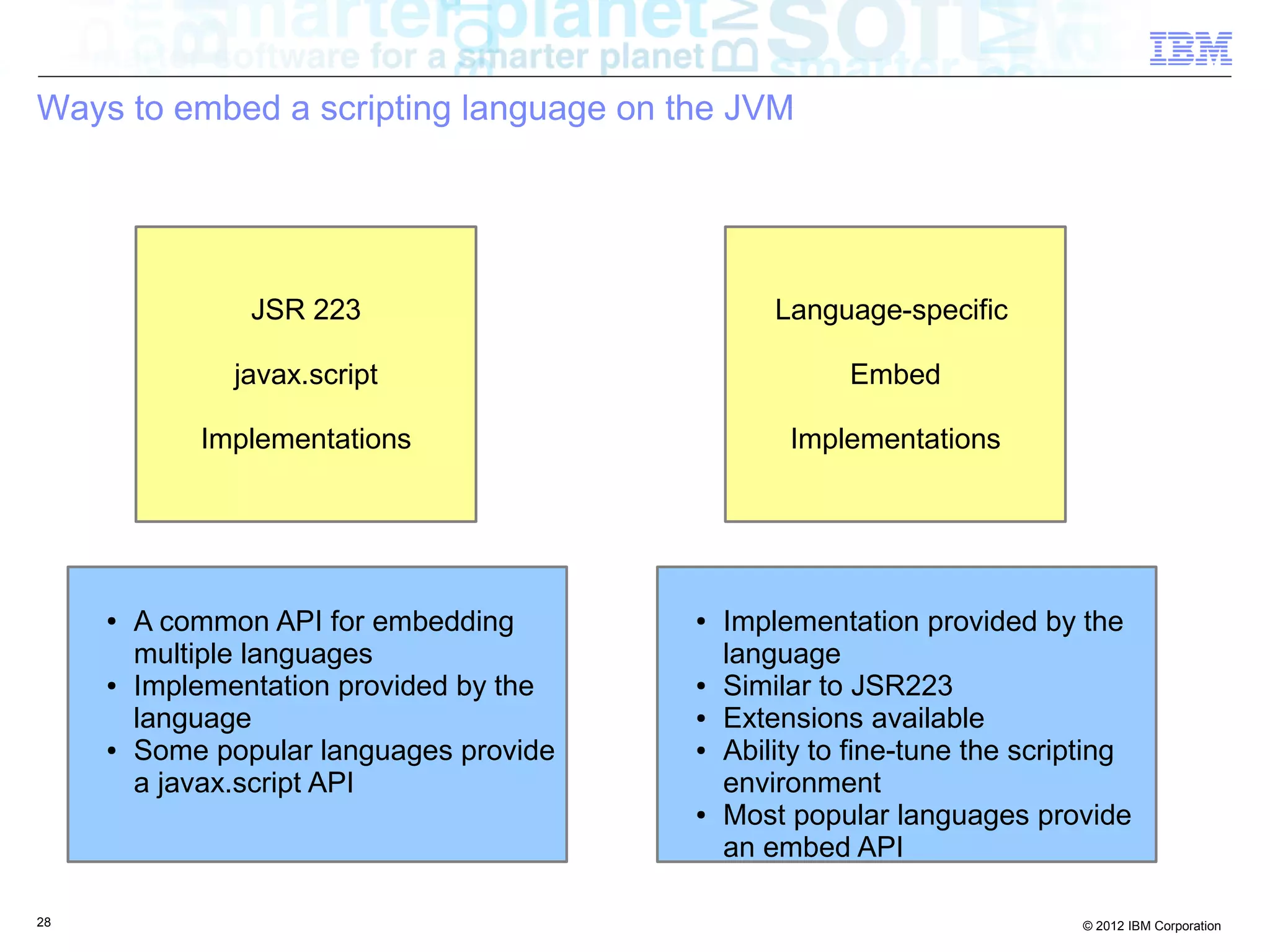
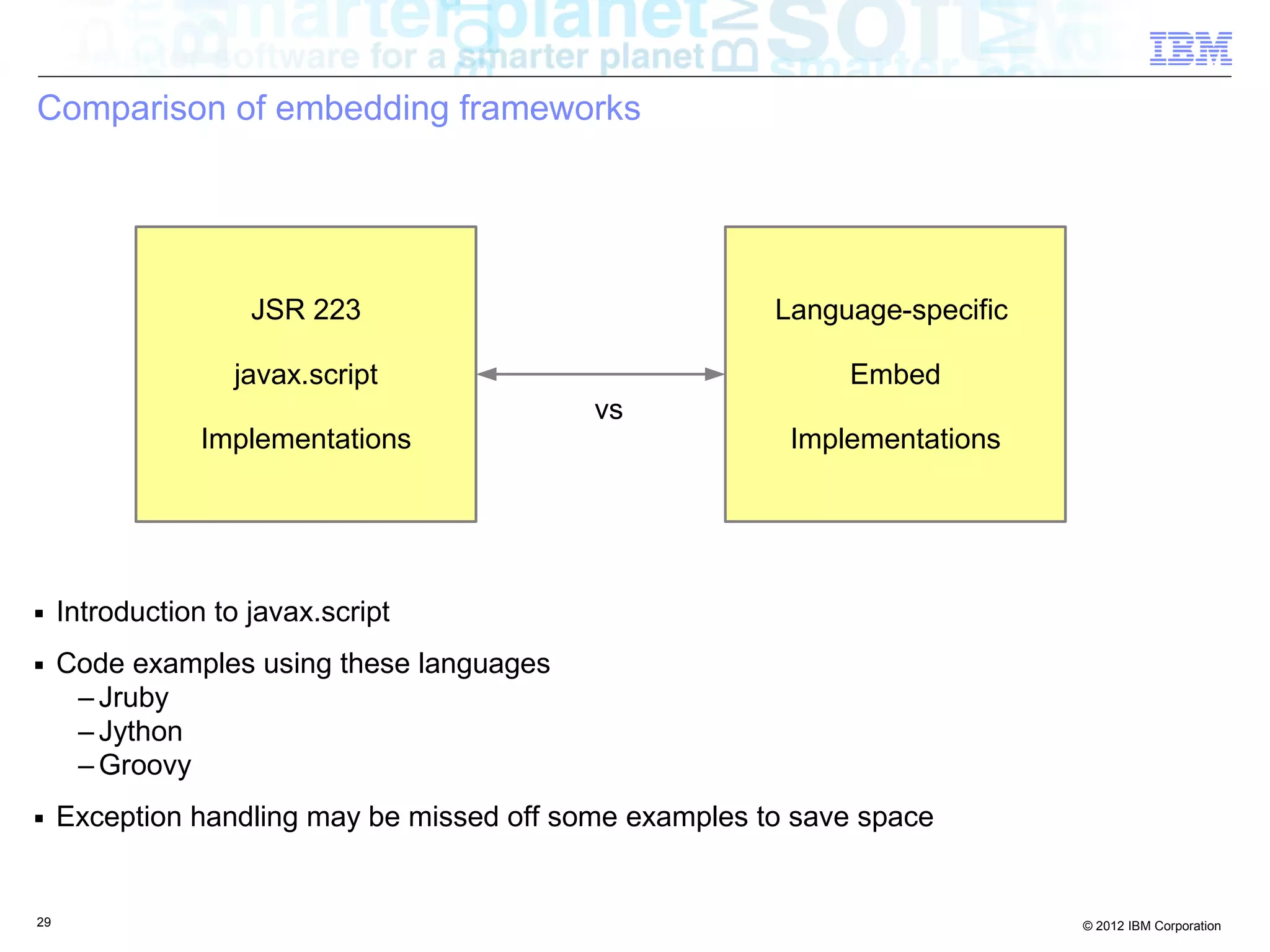
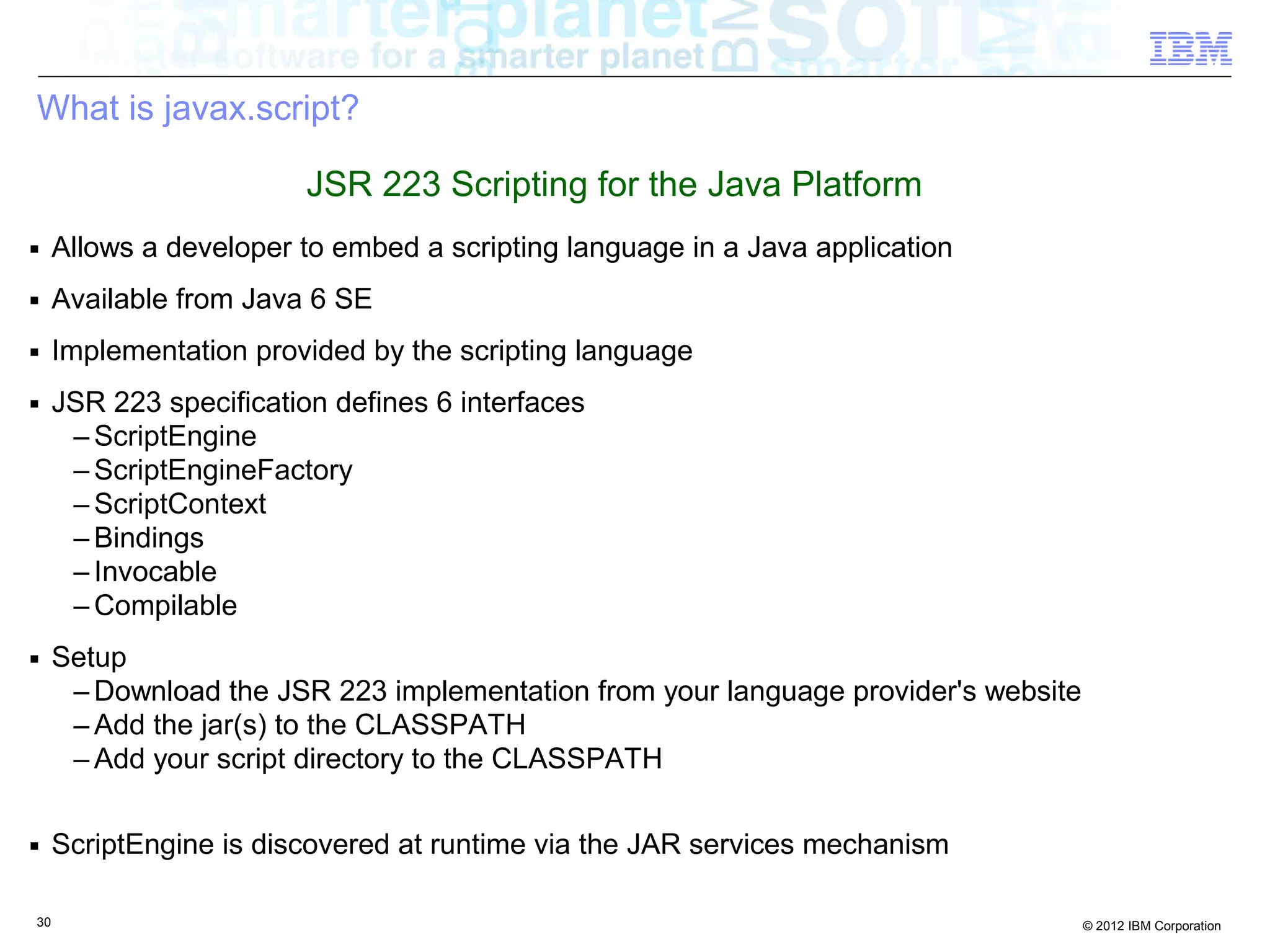
![Example: Query JAR services for installed JSR223 Java Scripting Engines JSR 223 import javax.script.*; public class ListScriptEngines { public static void main(String[] args) { ScriptEngineManager mgr = new ScriptEngineManager(); List<ScriptEngineFactory> factories = mgr.getEngineFactories(); for (ScriptEngineFactory factory: factories) { String engName = factory.getEngineName(); String engVersion = factory.getEngineVersion(); System.out.println("Script Engine: " + engName + " V" + engVersion); } } } Output to stdout: Script Engine: Groovy Scripting Engine V2.0 Script Engine: jython V2.5.3 Script Engine: JSR 223 JRuby Engine V1.6.7.2 Script Engine: Mozilla Rhino V1.7 release 3 PRERELEASE 31 © 2012 IBM Corporation](https://image.slidesharecdn.com/javaone2012con3978scriptinglanguagesonthejvm-121011095505-phpapp01/75/JavaOne-2012-CON3978-Scripting-Languages-on-the-JVM-31-2048.jpg)
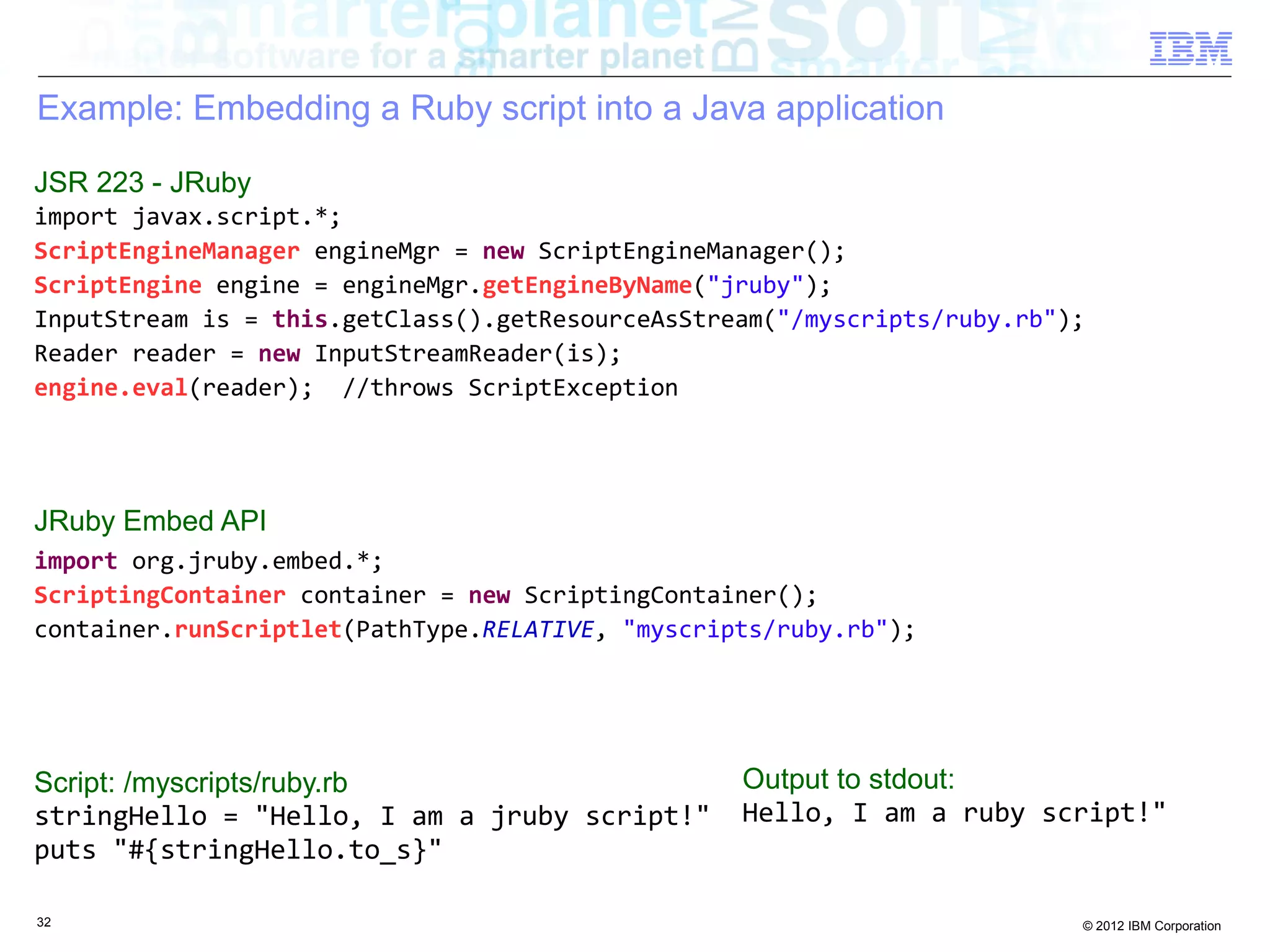
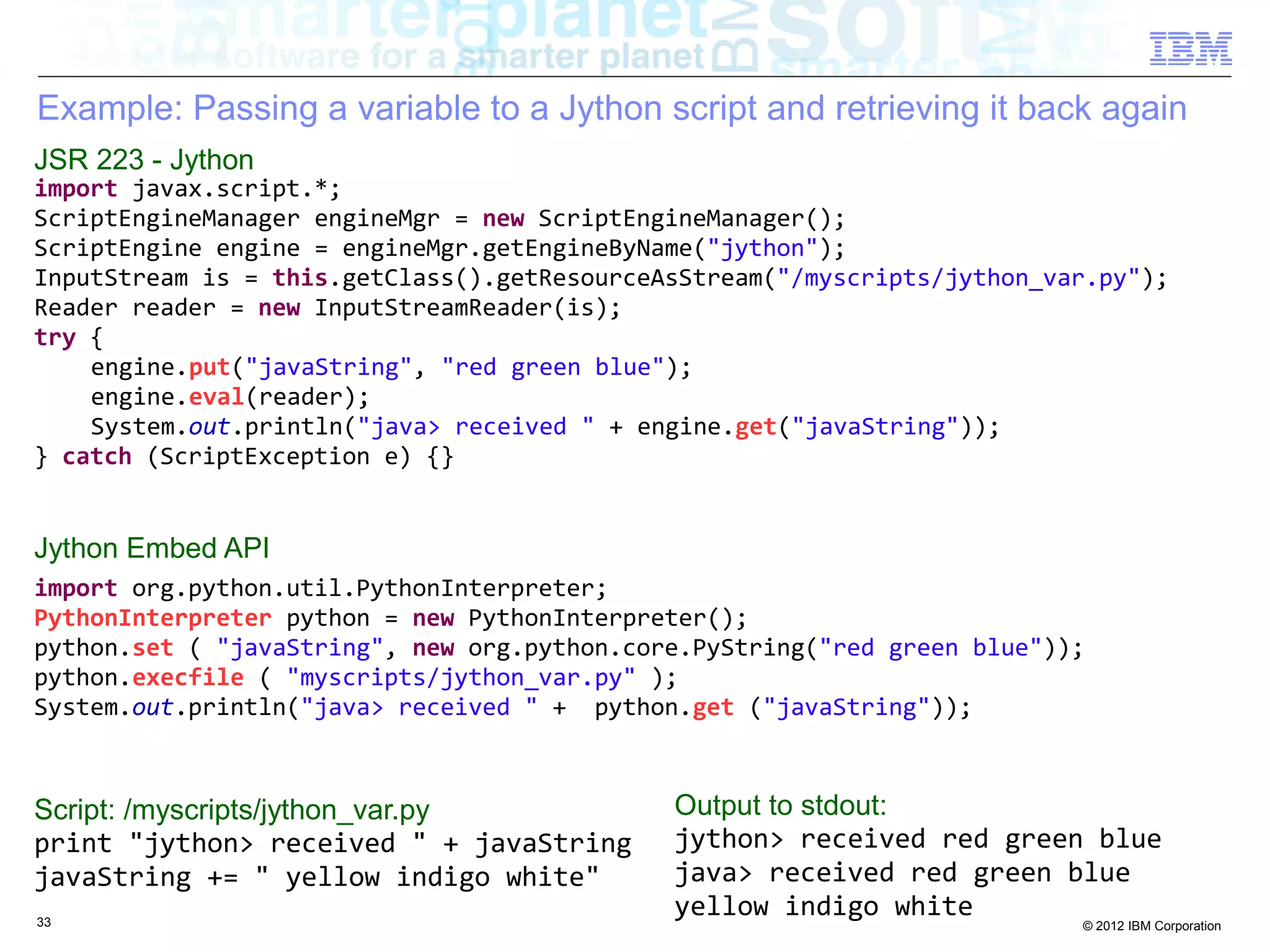
![Example: Invoke a Groovy function with a return value JSR 223 - Groovy ScriptEngineManager engineMgr = new ScriptEngineManager(); ScriptEngine engine = engineMgr.getEngineByName("groovy"); InputStream is = this.getClass().getResourceAsStream("/myscripts/groovy_func.groovy"); Reader reader = new InputStreamReader(is); if (engine instanceof Invocable) { //Invocable is an optional interface Invocable invocableEngine = (Invocable) engine; engine.eval(reader); System.out.println("java> What's the Square root of 360?"); double squareRoot = (double) invocableEngine.invokeFunction("squareRoot", 360); System.out.println("java> " + squareRoot); } Groovy Embed API String[] roots = new String[] { "C:scripts" }; GroovyScriptEngine gse = new GroovyScriptEngine(roots); Class<?> groovyClass = gse.loadScriptByName("groovy_func.groovy"); GroovyObject groovyObject = (GroovyObject) groovyClass.newInstance(); System.out.println("java> What's the square root of 360?"); System.out.println("java> " + groovyObject.invokeMethod("squareRoot", 360).toString()); Script: /myscripts/groovy_func.groovy Output to stdout: def squareRoot(number) { java> What's the square root of 360? println "groovy> Sqrt of ${number} is" groovy> Sqrt of 360 is Math.sqrt(number) java> 18.973665961010276 } 34 © 2012 IBM Corporation](https://image.slidesharecdn.com/javaone2012con3978scriptinglanguagesonthejvm-121011095505-phpapp01/75/JavaOne-2012-CON3978-Scripting-Languages-on-the-JVM-34-2048.jpg)
